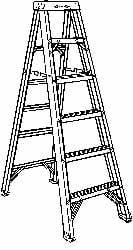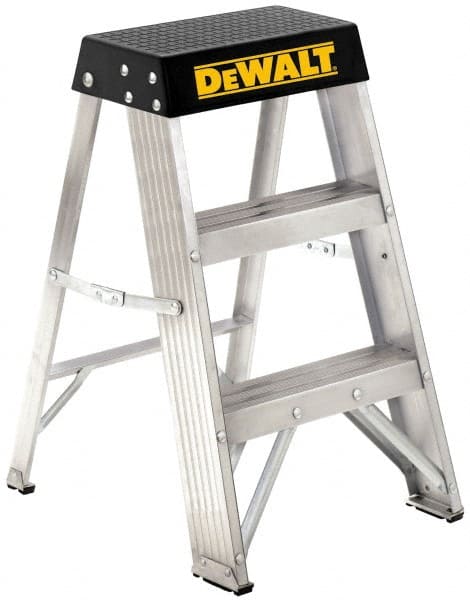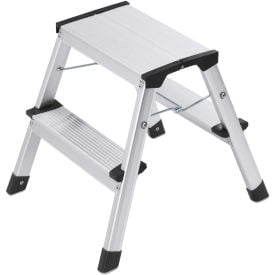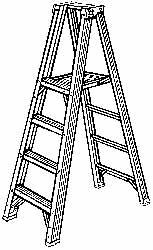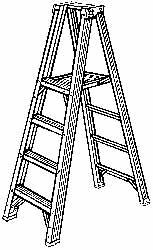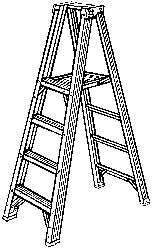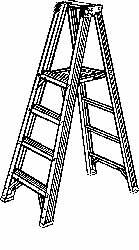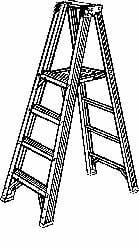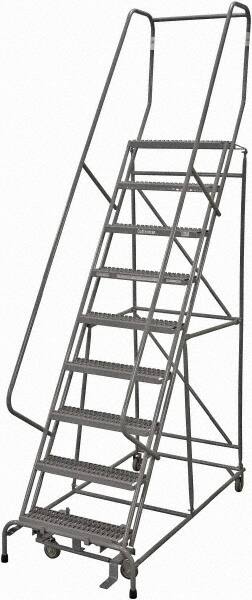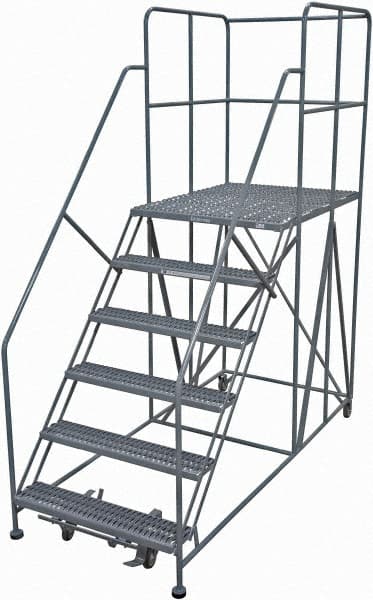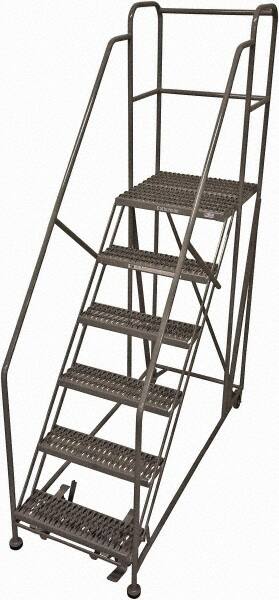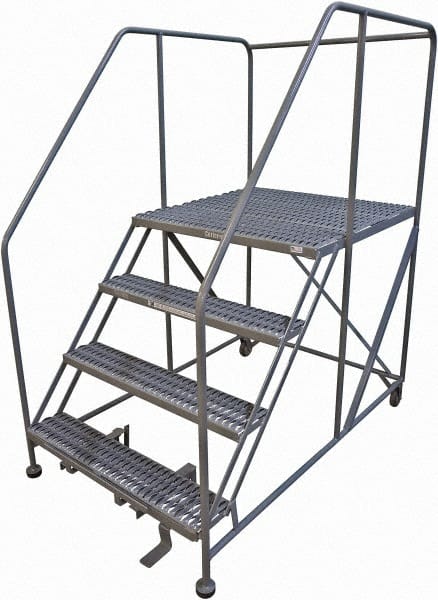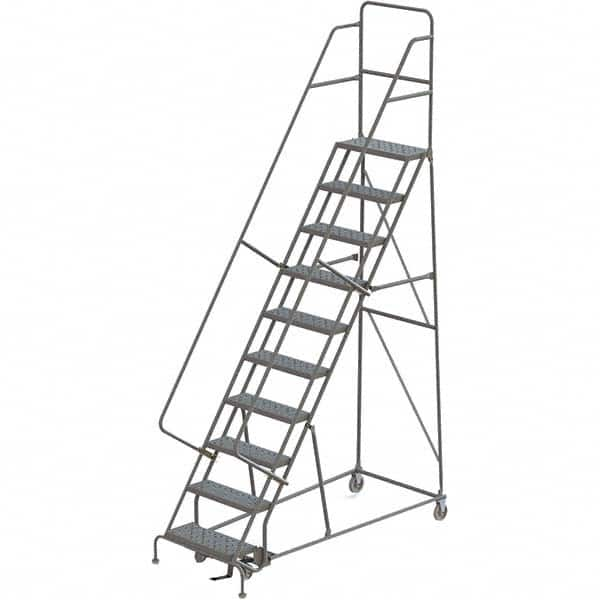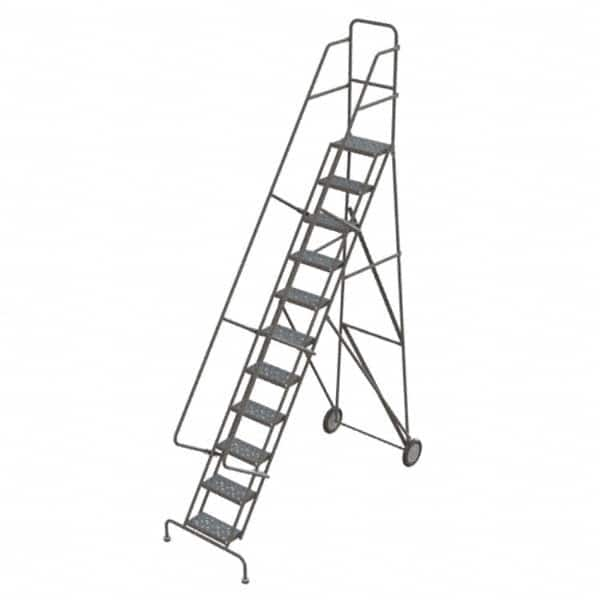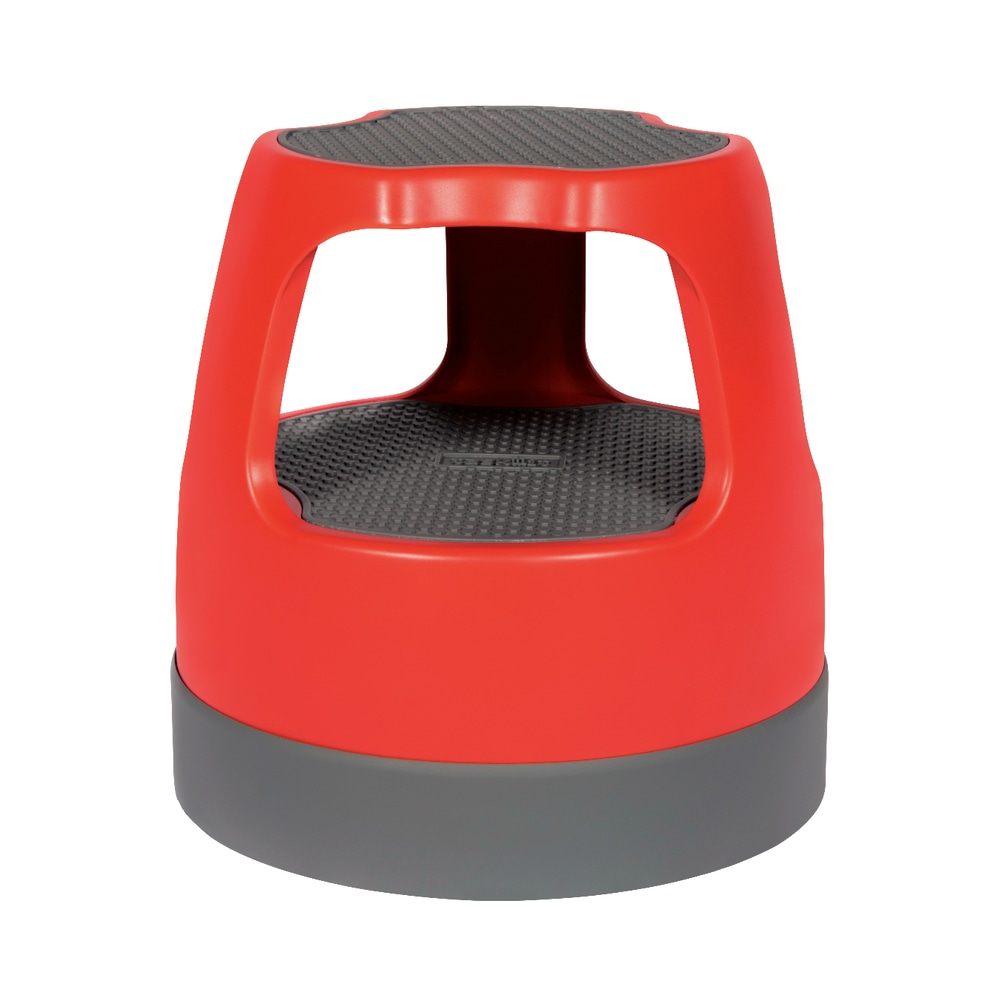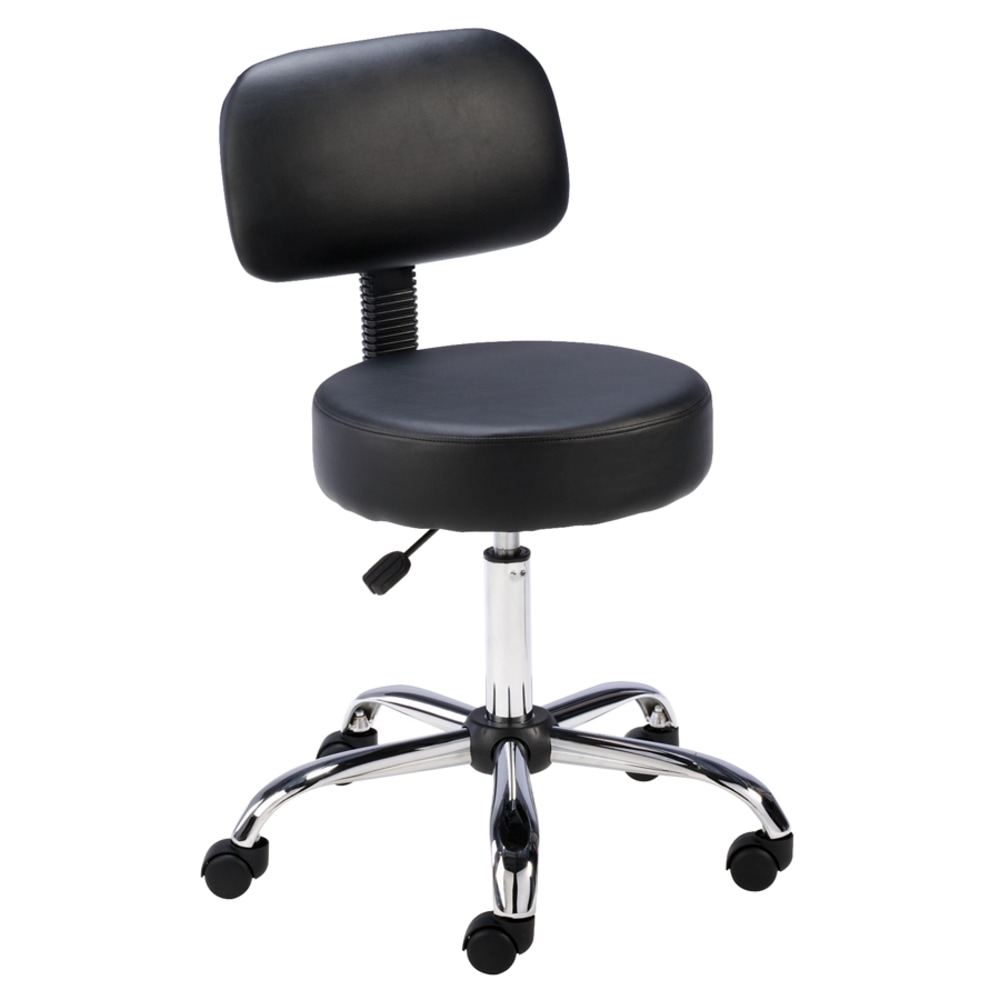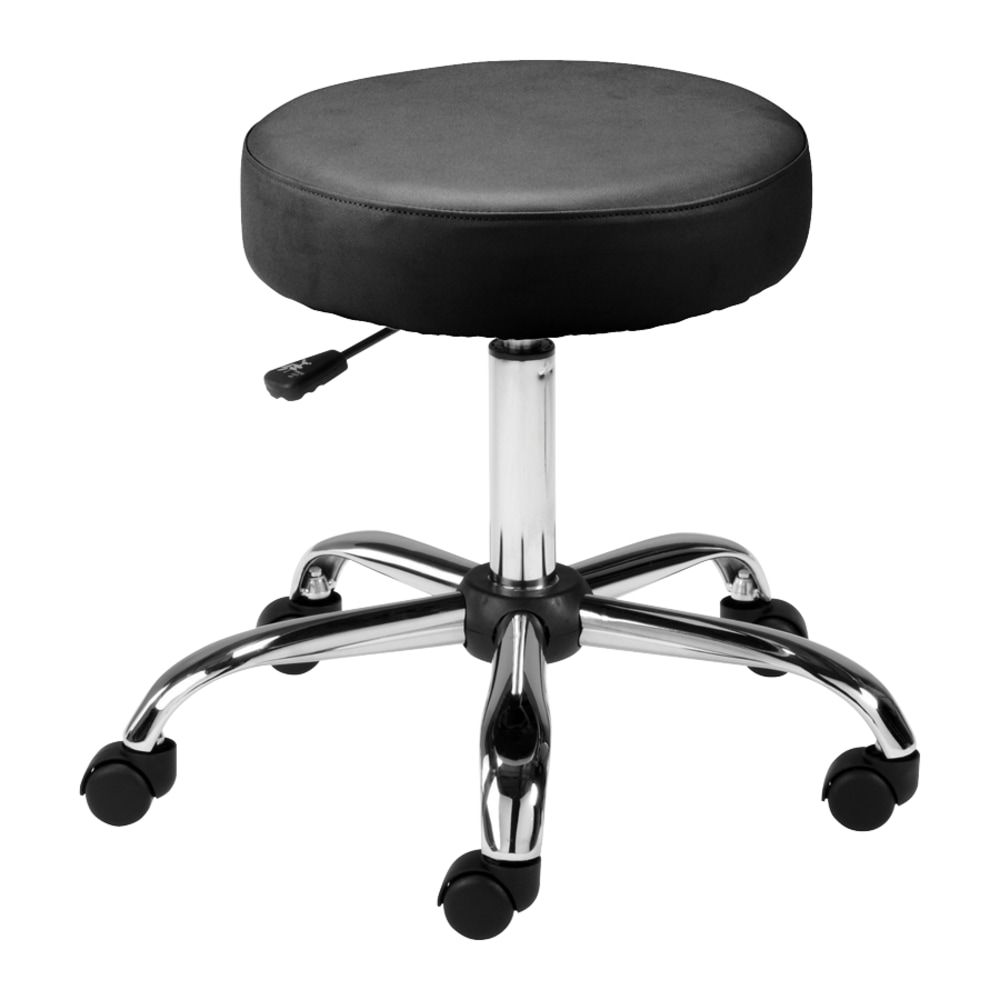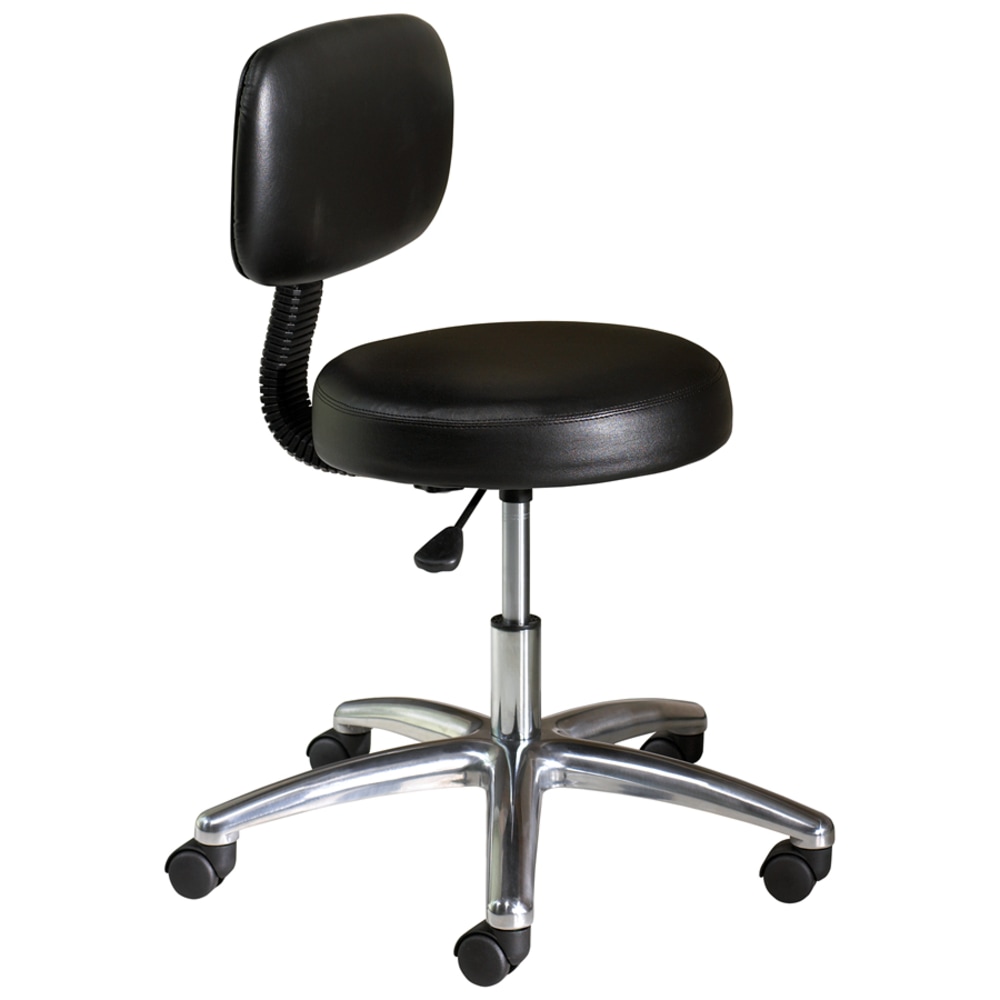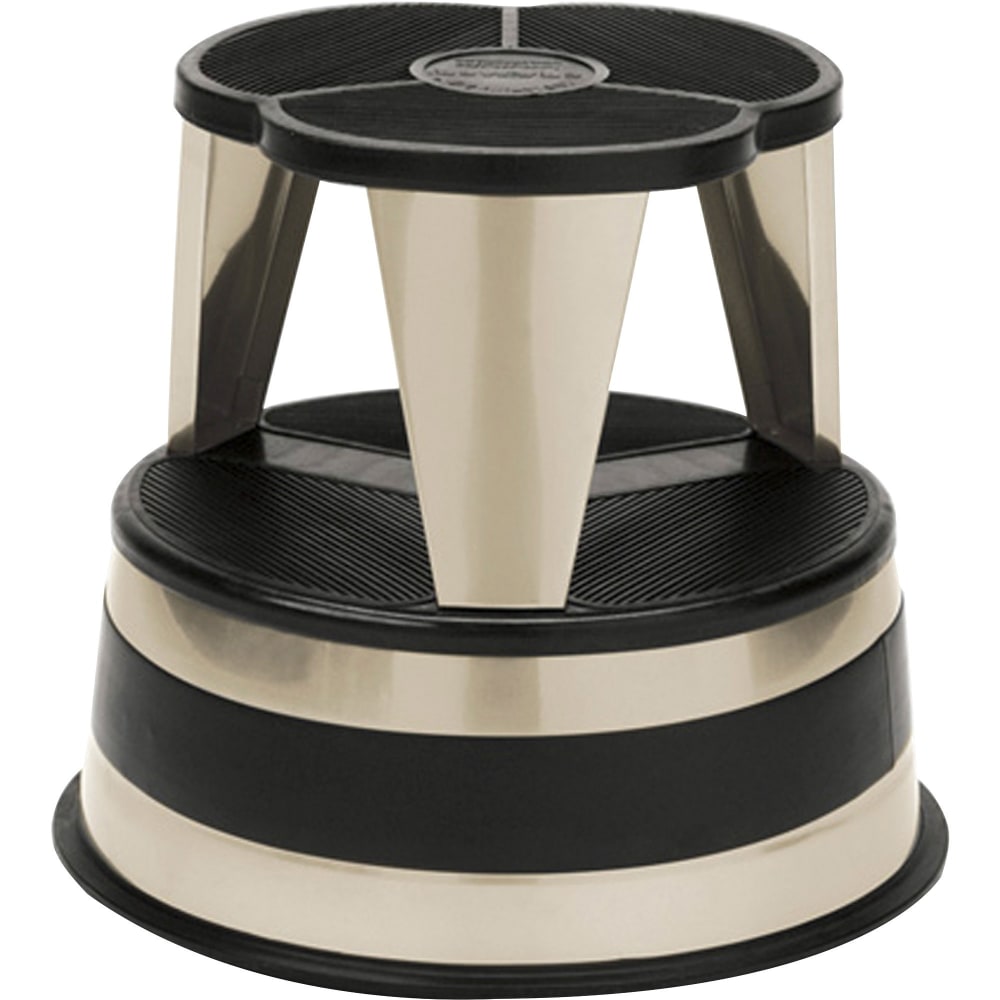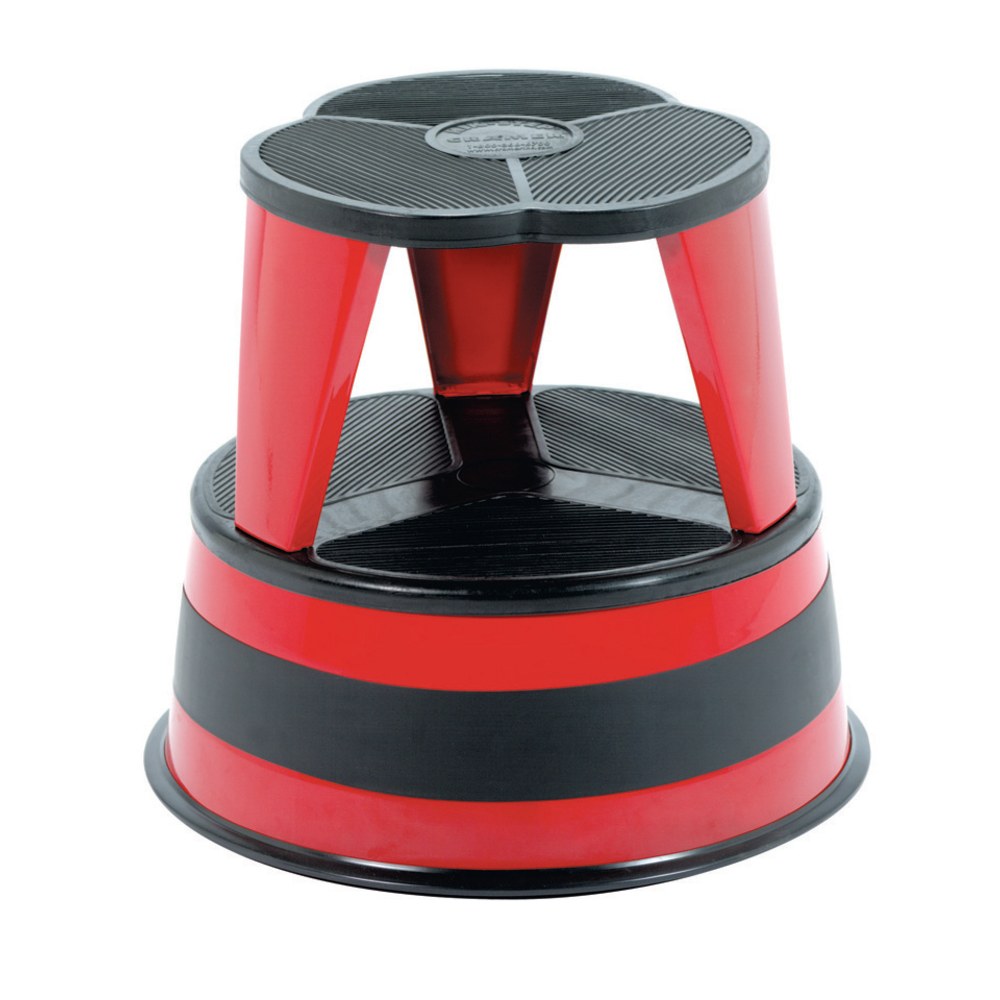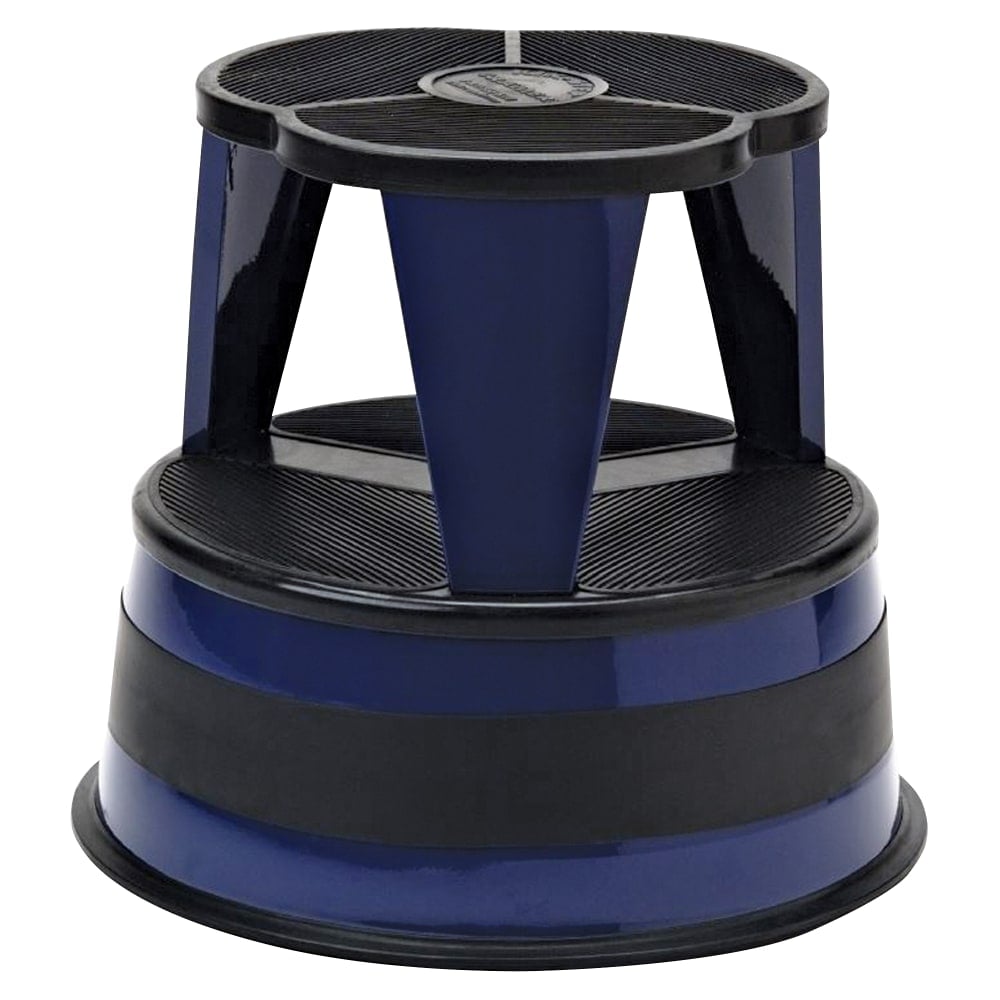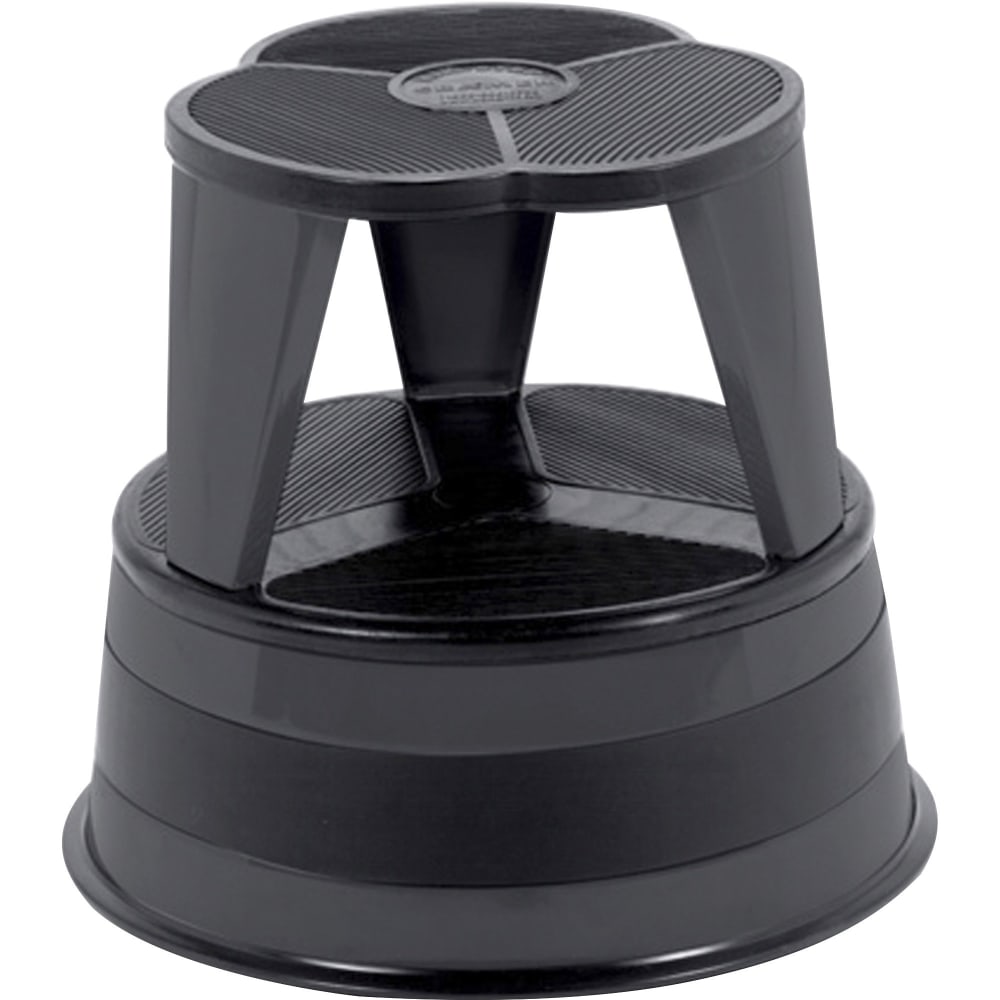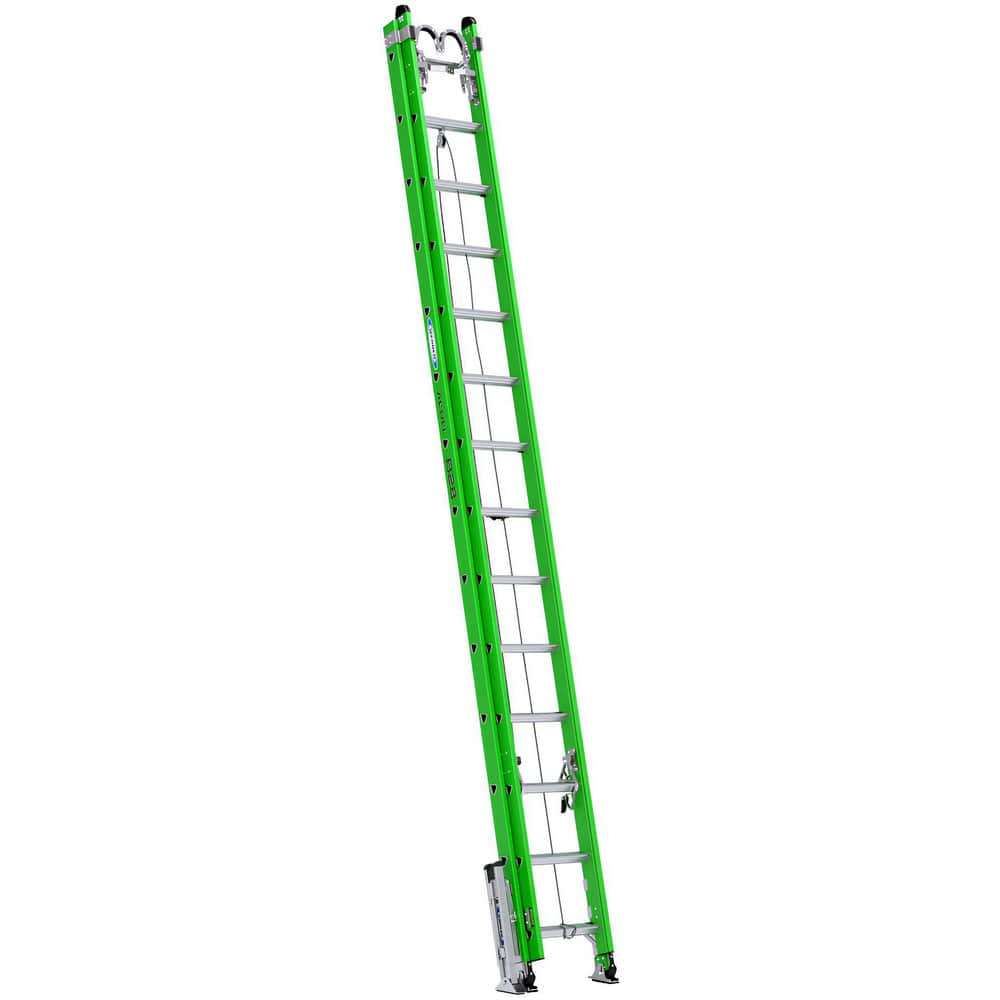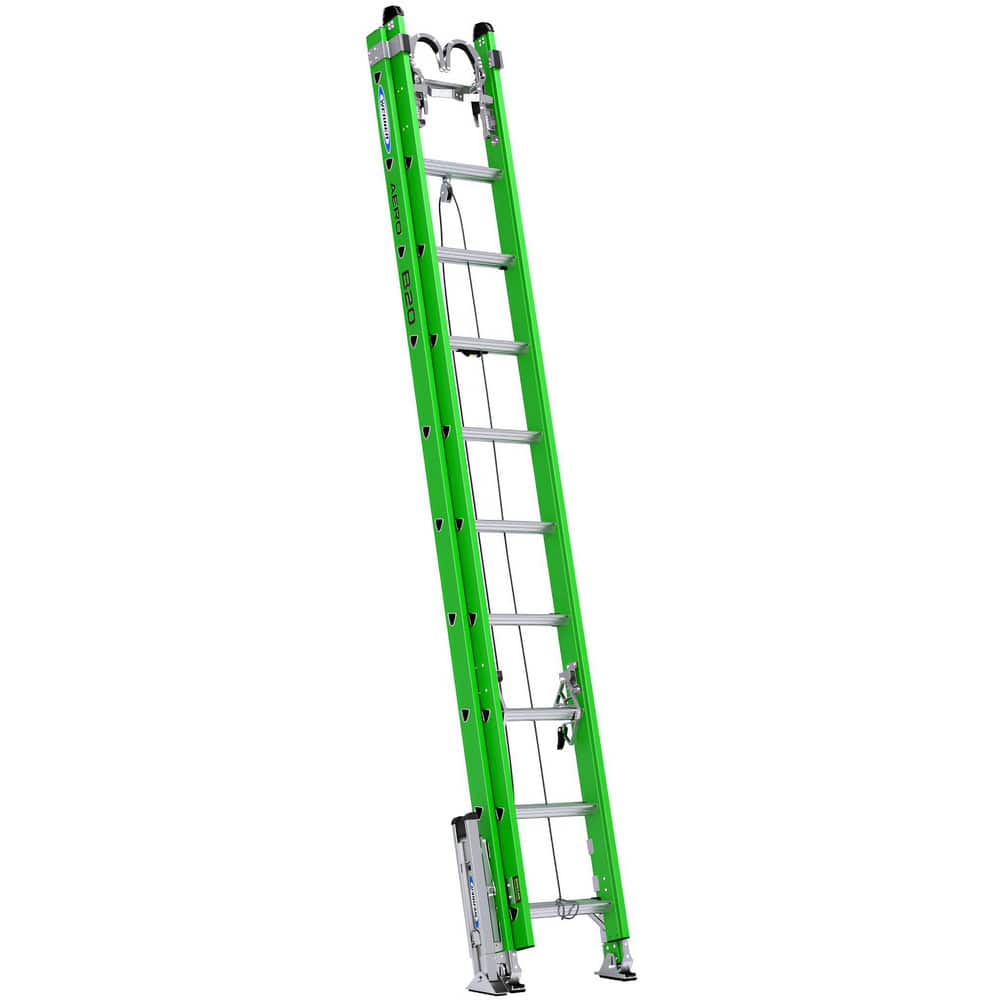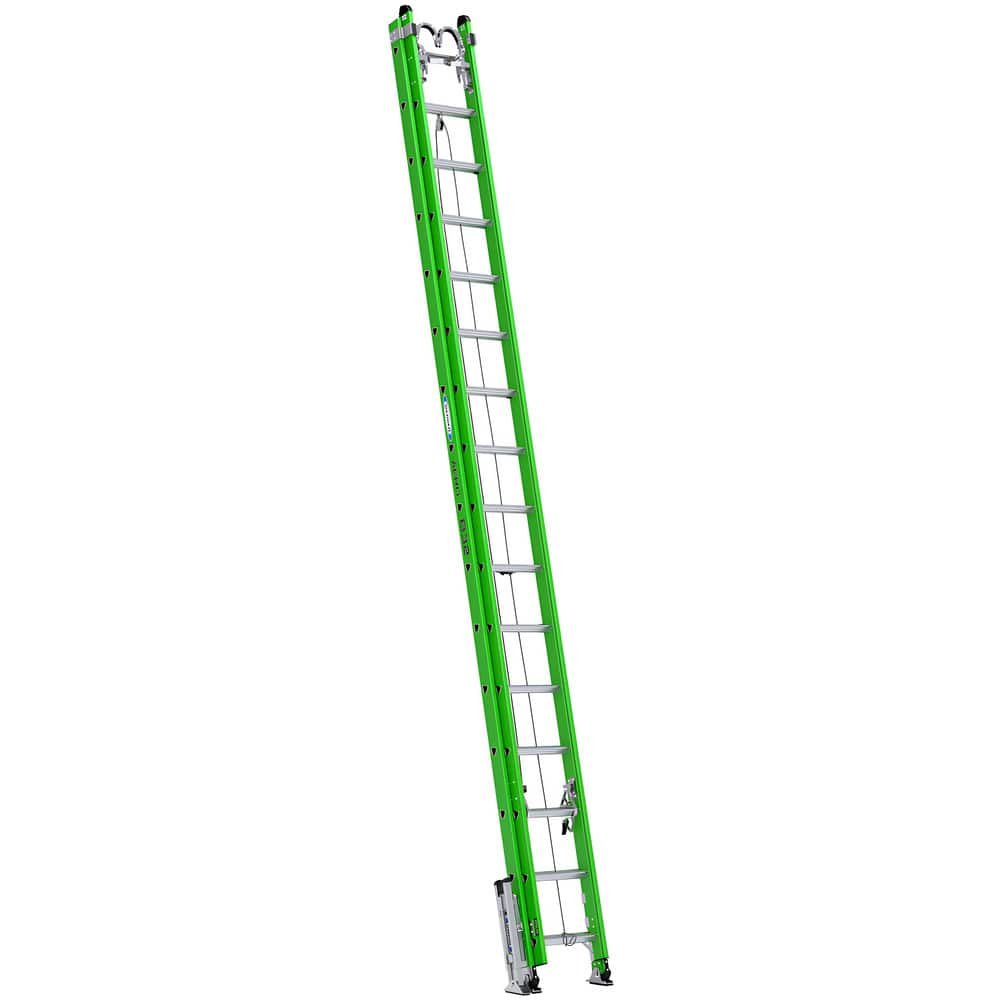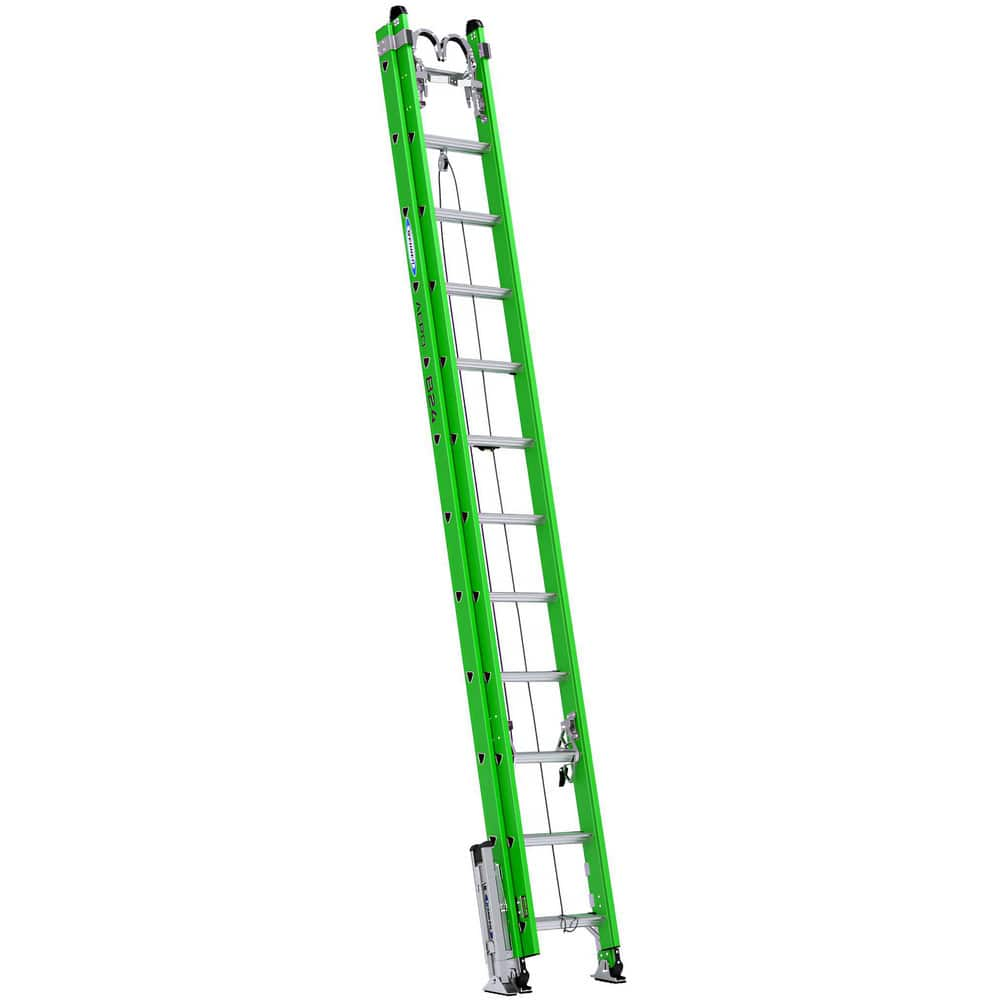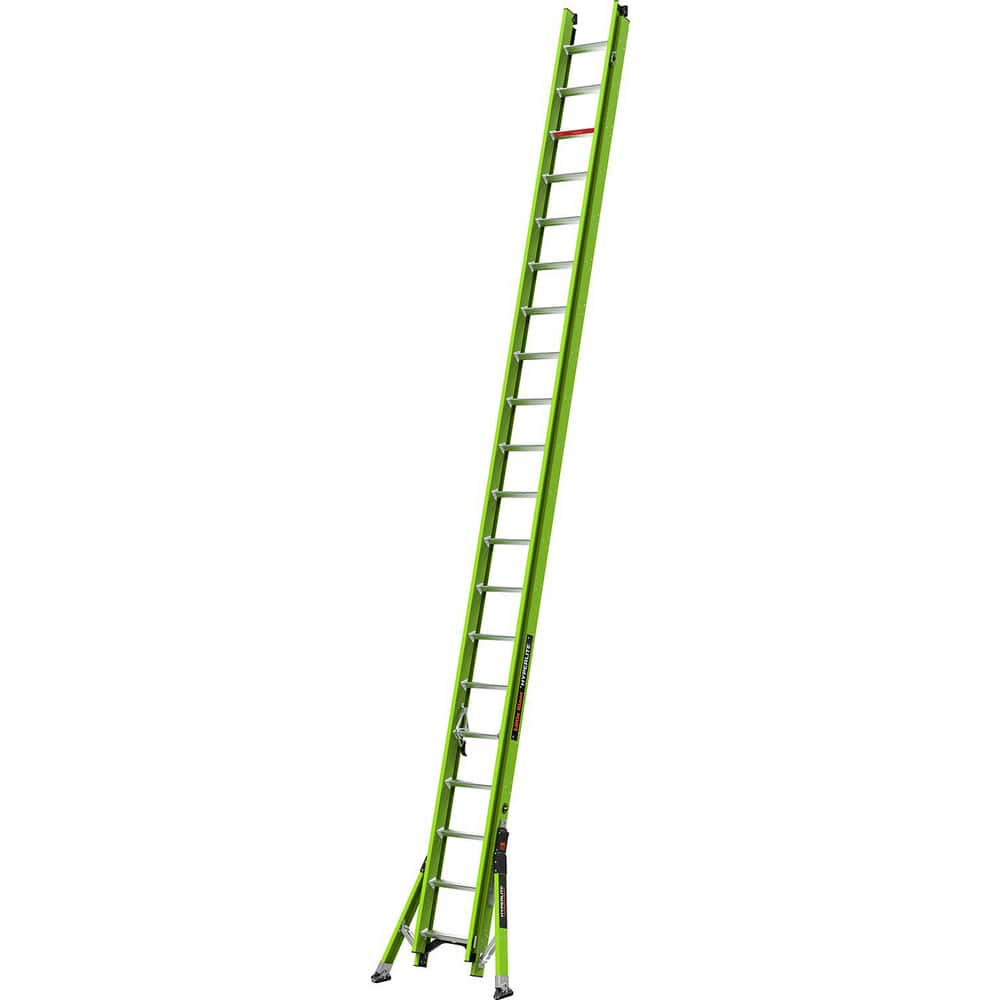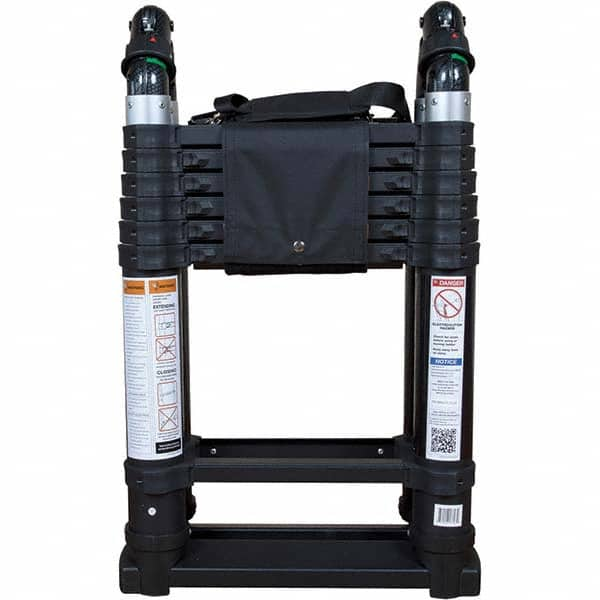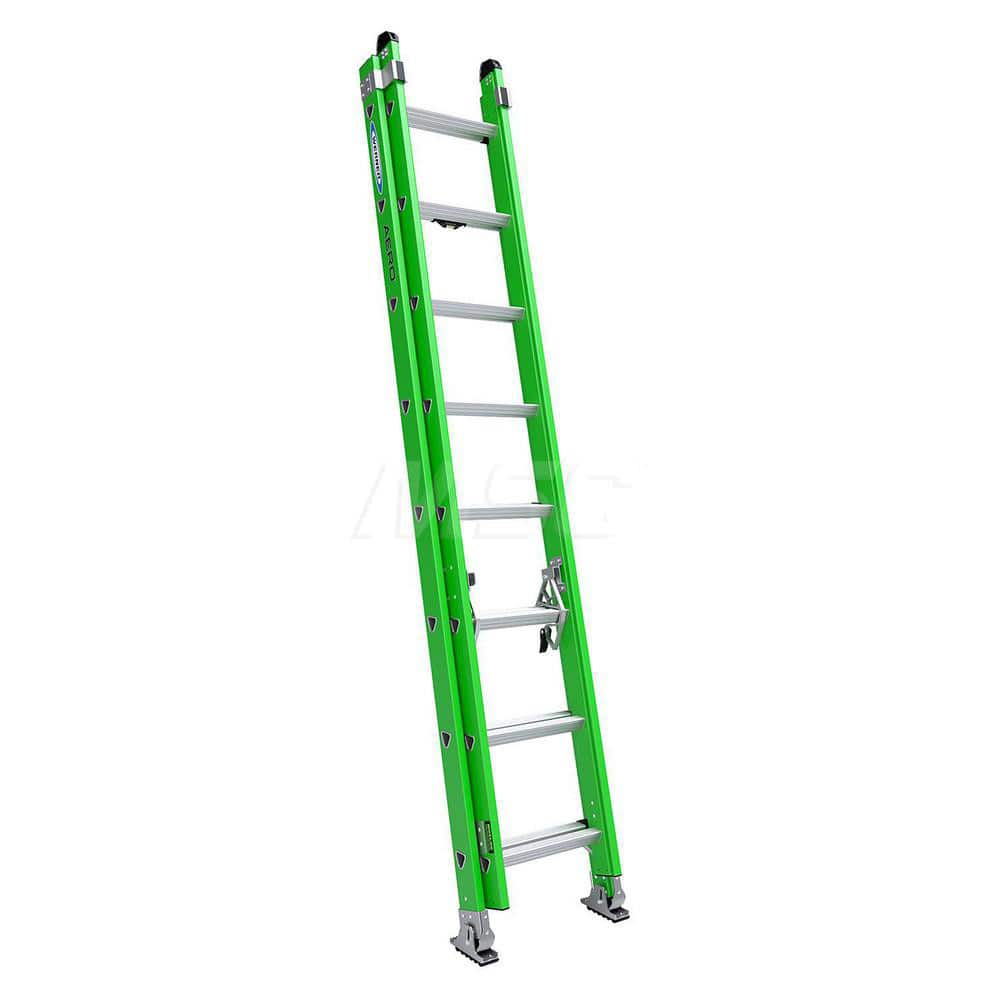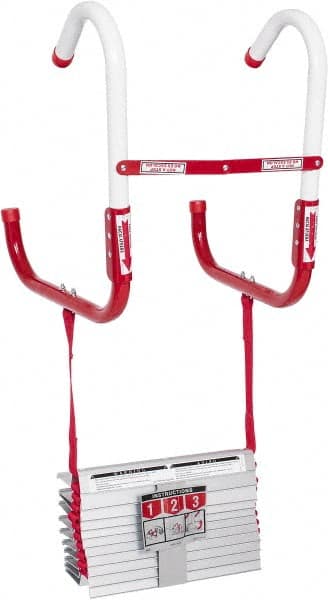Mastering Ladder Safety: Your Ultimate Guide to Choosing the Right Ladder for Any Job
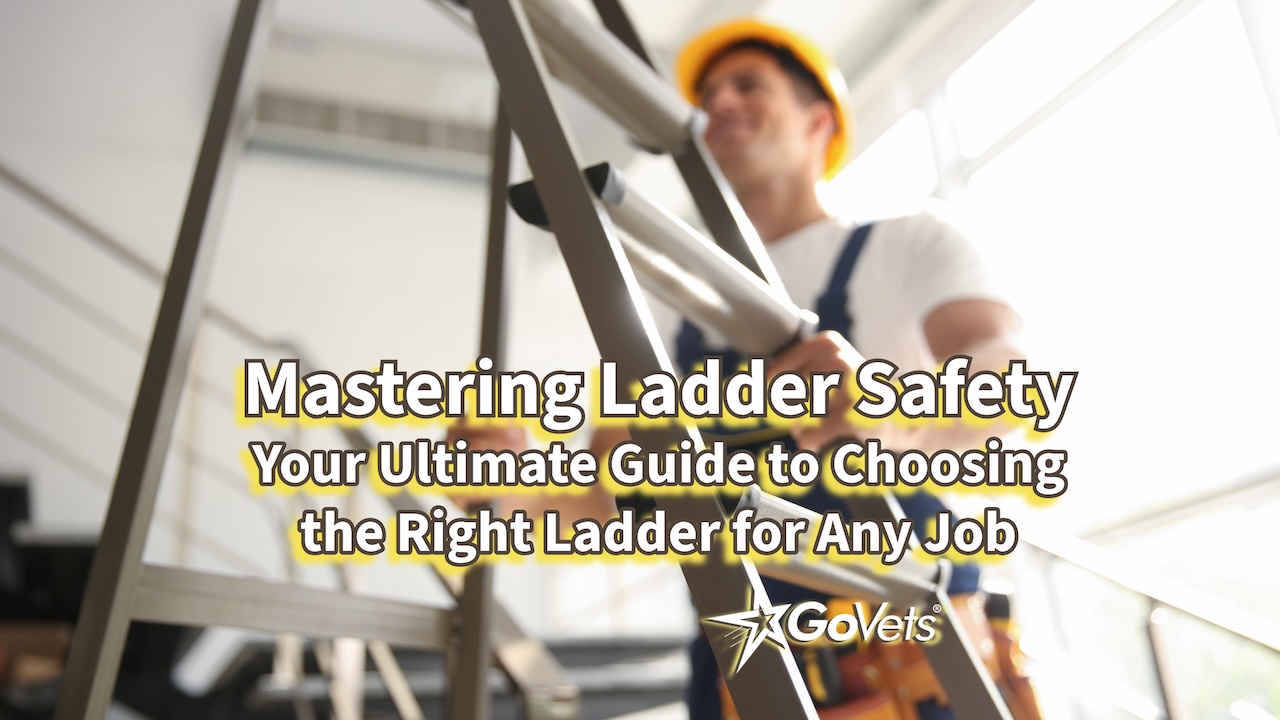
Introduction
Ladders are indispensable tools in countless industries and households, providing access to heights and spaces that would otherwise be inaccessible. However, with the convenience of ladders comes the responsibility of ensuring safety, as accidents related to ladder use can lead to serious injuries or even fatalities. In recognition of the importance of ladder safety, Ladder Safety Month is observed annually to raise awareness and promote safe practices among users.
In this comprehensive guide, we delve into various types of ladders, discussing their functionalities, safety risks, considerations, FAQs, and product recommendations. Whether you're a homeowner looking for a reliable attic ladder or a facilities manager in need of industrial-grade solutions, this guide equips you with the knowledge and tools to make informed decisions and prioritize safety in any ladder-related task.
Understanding the Importance of Ladder Safety Month
Ladder Safety Month, celebrated annually, underscores the critical need for awareness and caution when working with ladders. This initiative aims to educate individuals on the risks associated with ladder use and promote best practices for injury prevention. In this guide, we delve into various types of ladders, their safety considerations, FAQs, and product recommendations to ensure a safe and productive work environment.
Ladder Recommendations & Safety Tips:
Ladders come in a variety of shapes, sizes, and configurations, each designed to serve specific purposes and accommodate diverse working environments. From simple step ladders to complex configurable systems, understanding the various ladder types is essential for selecting the right tool for the job.
In this guide, we explore a comprehensive range of ladder types, including track ladders, telescoping ladders, straight ladders, stepladders, rolling ladders, platform stepladders, multipurpose ladders, extension ladders, escape ladders, dock and fixed ladders, crossover ladders, configurable ladders, cantilever ladders, and attic ladders. Each type offers unique features and functionalities tailored to different applications, whether it's accessing elevated platforms, navigating confined spaces, or reaching overhead storage areas.
By familiarizing yourself with the characteristics and capabilities of each ladder type, you can make informed decisions based on the specific requirements of your project or task. Whether you're a professional tradesperson, a facility manager, or a homeowner tackling DIY projects, having a comprehensive understanding of ladder types empowers you to work safely, efficiently, and effectively at any height or location.
Join us as we delve into the world of ladder safety and explore the diverse array of ladder types available, equipping you with the knowledge and insights to elevate your work to new heights while prioritizing safety above all else.
Track Ladders
Overview: Track ladders are specialized ladders designed for use in industrial settings, such as warehouses and distribution centers. They feature a track-mounted system that allows for easy movement along designated paths, enhancing efficiency in high-volume operations.
Top 5 Safety Risks:
- Falls from Height: Improper use or securing of track ladders can lead to falls from significant heights.
- Track Malfunction: Failure to maintain or inspect the track system can result in accidents.
- Overloading: Exceeding the ladder's weight capacity poses a risk of collapse.
- Slipping: Wet or oily tracks can cause slips and falls.
- Electrical Hazards: Contact with overhead power lines while using track ladders can be fatal.
Top 5 Safety Considerations:
- Proper Installation: Ensure track ladders are correctly installed and securely fastened.
- Regular Maintenance: Conduct routine inspections and maintenance to identify and address any issues promptly.
- Training: Provide comprehensive training to operators on safe usage and maintenance procedures.
- Weight Limits: Adhere to weight capacity guidelines to prevent structural failure.
- Electrical Awareness: Stay clear of overhead power lines and maintain a safe distance.
Top 10 FAQs:
-
Q: Can track ladders be customized to fit specific track layouts? A: Yes, many track ladder systems offer customizable configurations to accommodate various track designs.
-
Q: What safety features should I look for when selecting a track ladder? A: Look for features like anti-slip treads, safety cages, and emergency stop mechanisms.
-
Q: Are track ladders suitable for outdoor use? A: Some track ladder models are designed for outdoor use, but proper weatherproofing and maintenance are essential.
-
Q: How often should track ladder tracks be inspected? A: Tracks should be inspected regularly, ideally before each use, to ensure smooth operation and detect any defects.
-
Q: Can track ladders be retrofitted onto existing track systems? A: In many cases, track ladders can be retrofitted onto existing track systems with minimal modifications.
-
Q: Are there weight limits for track ladder operators? A: Weight limits vary depending on the ladder model and manufacturer. Always adhere to the specified weight capacity.
-
Q: What safety training is required for track ladder operators? A: Operators should undergo comprehensive training on ladder safety, including proper usage, maintenance, and emergency procedures.
-
Q: How do I prevent track ladder accidents caused by slippery tracks? A: Keep tracks clean and free of debris, oil, or other substances that could cause slippage.
-
Q: Can track ladders be used in confined spaces? A: Some track ladder models are designed for use in confined spaces, but proper ventilation and safety precautions must be observed.
-
Q: Are there regulations governing the use of track ladders in industrial settings? A: Yes, OSHA regulations and industry standards outline safety requirements for track ladder installation, usage, and maintenance.
Product Recommendations: Explore a variety of track ladders to suit your industrial needs: Track Ladders -
Telescoping Ladders
Overview: Telescoping ladders are versatile and compact, featuring a retractable design that allows for easy storage and transportation. Ideal for both indoor and outdoor use, these ladders can extend to various heights, making them suitable for a wide range of tasks.
Top 5 Safety Risks:
- Pinch Points: Extending or retracting telescoping ladders can pose a risk of finger or hand entrapment.
- Instability: Improper extension or uneven ground can cause the ladder to become unstable.
- Overreaching: Stretching beyond the ladder's reach can lead to loss of balance and falls.
- Material Failure: Damage to the ladder's locking mechanism or structural integrity can result in collapse.
- Incorrect Use: Failure to follow manufacturer guidelines or using the ladder for unintended purposes can increase the risk of accidents.
Top 5 Safety Considerations:
- Proper Extension: Fully extend telescoping ladders and ensure all locking mechanisms are engaged before use.
- Stable Base: Place the ladder on a level surface and use stabilizers or outriggers if necessary to prevent tipping.
- Avoid Overreaching: Position the ladder so that you can work comfortably within arm's reach without leaning or stretching.
- Regular Inspection: Inspect the ladder before each use for signs of damage or wear, especially the locking mechanism and rungs.
- Safe Descent: Descend the ladder facing towards it and maintain three points of contact at all times.
Top 10 FAQs:
-
Q: Can telescoping ladders be used as scaffolding? A: No, telescoping ladders are not designed to be used as scaffolding or to support additional platforms.
-
Q: What materials are telescoping ladders typically made from? A: Telescoping ladders are commonly constructed from aluminum, fiberglass, or steel for durability and strength.
-
Q: Can telescoping ladders be used on stairs? A: No, telescoping ladders should never be used on stairs or uneven surfaces.
-
Q: Are telescoping ladders suitable for professional use? A: Yes, many telescoping ladder models are designed for professional use and meet industry safety standards.
-
Q: How do I clean and maintain a telescoping ladder? A: Clean the ladder regularly with mild soap and water, and lubricate the moving parts as recommended by the manufacturer.
-
Q: Are there weight limits for telescoping ladder users? A: Yes, weight limits vary depending on the ladder model and manufacturer. Always adhere to the specified weight capacity.
-
Q: Can telescoping ladders be used in windy conditions? A: It is not recommended to use telescoping ladders in windy conditions, as this can affect stability and safety.
-
Q: Can telescoping ladders be extended partially, or must they be fully extended? A: Telescoping ladders can typically be extended to any desired height within their maximum reach.
-
Q: Can telescoping ladders be used for roof access? A: Telescoping ladders can be used for roof access, but proper safety precautions must be observed, such as using a stabilizer.
-
Q: Are there regulations governing the use of telescoping ladders in the workplace? A: Yes, OSHA regulations and industry standards outline safety requirements for telescoping ladder usage in professional settings.
Product Recommendations: Discover a range of telescoping ladders for your versatile needs: Telescoping Ladders -
Straight Ladders
Overview: Straight ladders, also known as extension ladders, are a staple in many workplaces and households. They feature a simple, straight design and can be extended to various heights to reach elevated areas safely.
Top 5 Safety Risks:
- Incorrect Angle: Placing the ladder at the wrong angle can cause it to slip or fall backward.
- Overreaching: Stretching beyond the ladder's reach increases the risk of losing balance and falling.
- Material Failure: Damage to the ladder's rungs, rails, or locking mechanisms can result in collapse.
- Unstable Base: Uneven ground or improper placement of the ladder can lead to instability.
- Electrical Hazards: Contact with overhead power lines while using straight ladders can be deadly.
Top 5 Safety Considerations:
- Proper Angle: Position the ladder at a 75-degree angle to ensure stability and prevent slipping.
- Secure Placement: Place the ladder on a level surface and use ladder stabilizers if necessary to prevent wobbling.
- Weight Capacity: Adhere to weight limits specified by the manufacturer to prevent structural failure.
- Safety Gear: Wear non-slip footwear and use personal fall protection equipment when working at height.
- Weather Conditions: Avoid using straight ladders in adverse weather conditions, such as high winds or rain.
Top 10 FAQs:
-
Q: Can straight ladders be used as step ladders by leaning them against a wall? A: No, straight ladders should only be used in their fully extended position and never leaned against a surface.
-
Q: What materials are straight ladders typically made from? A: Straight ladders are commonly made from aluminum, fiberglass, or wood for durability and strength.
-
Q: Can straight ladders be used for roof access? A: Yes, straight ladders can be used for roof access, but proper safety precautions must be observed, such as using a stabilizer.
-
Q: How do I determine the correct ladder height needed for a specific task? A: Measure the height of the task or area you need to reach and choose a ladder with sufficient height, accounting for overhead reach.
-
Q: Can straight ladders be used on stairs? A: No, straight ladders are not designed for use on stairs or uneven surfaces.
-
Q: What is the proper way to transport straight ladders? A: Secure straight ladders to a roof rack or truck bed using appropriate tie-down straps to prevent shifting during transport.
-
Q: Are there regulations governing the use of straight ladders in the workplace? A: Yes, OSHA regulations and industry standards outline safety requirements for straight ladder usage in professional settings.
-
Q: Can straight ladders be used near electrical wires or power lines? A: No, straight ladders should never be used near electrical wires or power lines to avoid the risk of electrocution.
-
Q: How often should straight ladders be inspected for damage? A: Inspect straight ladders before each use and conduct a thorough inspection at least annually or after any significant impact.
-
Q: Can straight ladders be used as makeshift scaffolding by laying a plank across two ladders? A: No, using straight ladders as scaffolding in this manner is unsafe and should be avoided.
Product Recommendations: Browse our selection of straight ladders for safe and efficient elevation: Straight Ladders -
Stepladders
Overview: Stepladders are a versatile and commonly used type of ladder, featuring a self-supporting A-frame design with steps on both sides. These ladders are ideal for tasks that require a stable and secure platform at moderate heights.
Top 5 Safety Risks:
- Overreaching: Stretching beyond the ladder's reach increases the risk of losing balance and falling.
- Toppling Over: Improper placement or shifting of the ladder can cause it to tip over.
- Material Failure: Damage to the ladder's steps, rails, or hinges can lead to collapse.
- Unstable Base: Uneven ground or slippery surfaces can compromise the ladder's stability.
- Incorrect Use: Using stepladders for tasks that exceed their weight capacity or height limitations poses a safety hazard.
Top 5 Safety Considerations:
- Proper Setup: Fully open the ladder and ensure all locking mechanisms are engaged before use.
- Stable Base: Place the ladder on a level surface and use leg levelers or anti-slip feet if working on uneven ground.
- Weight Capacity: Adhere to weight limits specified by the manufacturer and avoid overloading the ladder.
- Maintain Three Points of Contact: Always maintain three points of contact with the ladder (two hands and one foot or two feet and one hand) while ascending or descending.
- Secure Tools and Materials: Use tool trays or tool belts to keep tools and materials securely within reach and prevent accidental drops.
Top 10 FAQs:
-
Q: Can stepladders be used as straight ladders by leaning them against a wall? A: No, stepladders should only be used in their fully opened and locked position, never leaned against a surface.
-
Q: What materials are stepladders typically made from? A: Stepladders are commonly made from aluminum, fiberglass, or steel for durability and strength.
-
Q: Can stepladders be used on stairs? A: No, stepladders are not designed for use on stairs or uneven surfaces.
-
Q: Are there weight limits for stepladder users? A: Yes, weight limits vary depending on the ladder model and manufacturer. Always adhere to the specified weight capacity.
-
Q: Can stepladders be used outdoors? A: Yes, many stepladder models are suitable for outdoor use, but proper weatherproofing and maintenance are essential.
-
Q: How do I stabilize a stepladder on uneven ground? A: Use leg levelers or anti-slip feet to stabilize the ladder on uneven surfaces and prevent wobbling.
-
Q: Can stepladders be used near electrical wires or power lines? A: No, stepladders should never be used near electrical wires or power lines to avoid the risk of electrocution.
-
Q: What is the proper way to ascend and descend a stepladder? A: Face the ladder and maintain three points of contact while climbing or descending, using the handrails for support.
-
Q: Can stepladders be folded for storage and transportation? A: Yes, most stepladders are designed to fold for compact storage and easy transport.
-
Q: Are there regulations governing the use of stepladders in the workplace? A: Yes, OSHA regulations and industry standards outline safety requirements for stepladder usage in professional settings.
Product Recommendations: Explore our selection of stepladders for safe and efficient elevation: Stepladders -
Step Ladders
Overview: Step ladders, also known as platform step ladders, feature a self-supporting A-frame design with a large platform at the top. These ladders offer a stable and secure platform for tasks that require prolonged standing at height, such as painting or maintenance work.
Top 5 Safety Risks:
- Overreaching: Stretching beyond the ladder's reach increases the risk of losing balance and falling.
- Toppling Over: Improper placement or shifting of the ladder can cause it to tip over.
- Material Failure: Damage to the ladder's steps, rails, or hinges can lead to collapse.
- Unstable Base: Uneven ground or slippery surfaces can compromise the ladder's stability.
- Incorrect Use: Using step ladders for tasks that exceed their weight capacity or height limitations poses a safety hazard.
Top 5 Safety Considerations:
- Proper Setup: Fully open the ladder and ensure all locking mechanisms are engaged before use.
- Stable Base: Place the ladder on a level surface and use leg levelers or anti-slip feet if working on uneven ground.
- Weight Capacity: Adhere to weight limits specified by the manufacturer and avoid overloading the ladder.
- Maintain Three Points of Contact: Always maintain three points of contact with the ladder (two hands and one foot or two feet and one hand) while ascending or descending.
- Secure Tools and Materials: Use tool trays or tool belts to keep tools and materials securely within reach and prevent accidental drops.
Top 10 FAQs:
-
Q: Can step ladders be used as straight ladders by leaning them against a wall? A: No, step ladders should only be used in their fully opened and locked position, never leaned against a surface.
-
Q: What materials are step ladders typically made from? A: Step ladders are commonly made from aluminum, fiberglass, or steel for durability and strength.
-
Q: Can step ladders be used on stairs? A: No, step ladders are not designed for use on stairs or uneven surfaces.
-
Q: Are there weight limits for step ladder users? A: Yes, weight limits vary depending on the ladder model and manufacturer. Always adhere to the specified weight capacity.
-
Q: Can step ladders be used outdoors? A: Yes, many step ladder models are suitable for outdoor use, but proper weatherproofing and maintenance are essential.
-
Q: How do I stabilize a step ladder on uneven ground? A: Use leg levelers or anti-slip feet to stabilize the ladder on uneven surfaces and prevent wobbling.
-
Q: Can step ladders be used near electrical wires or power lines? A: No, step ladders should never be used near electrical wires or power lines to avoid the risk of electrocution.
-
Q: What is the proper way to ascend and descend a step ladder? A: Face the ladder and maintain three points of contact while climbing or descending, using the handrails for support.
-
Q: Can step ladders be folded for storage and transportation? A: Yes, most step ladders are designed to fold for compact storage and easy transport.
-
Q: Are there regulations governing the use of step ladders in the workplace? A: Yes, OSHA regulations and industry standards outline safety requirements for step ladder usage in professional settings.
Product Recommendations: Explore our selection of step ladders for safe and efficient elevation: Step Ladders -
Rolling Ladders
Overview: Rolling ladders, equipped with casters or wheels, offer convenient mobility and easy access to elevated areas. These ladders are commonly used in warehouses, libraries, and retail stores for stock picking, maintenance, and storage applications.
Top 5 Safety Risks:
- Unstable Movement: Improper use or excessive speed can cause the ladder to roll uncontrollably.
- Overreaching: Stretching beyond the ladder's reach increases the risk of losing balance and falling.
- Caster Lock Failure: Failure to lock the casters in place can result in unexpected movement.
- Material Failure: Damage to the ladder's steps, rails, or locking mechanisms can lead to collapse.
- Obstacle Collision: Colliding with obstacles or uneven surfaces while moving the ladder can cause tipping or tripping hazards.
Top 5 Safety Considerations:
- Secure Locking: Ensure that all caster locks are engaged before climbing or descending the ladder.
- Stable Base: Use the ladder on a level surface and avoid placing it near edges or drop-offs.
- Weight Distribution: Distribute weight evenly on the ladder and avoid overloading it beyond its capacity.
- Clear Path: Clear obstacles and debris from the ladder's intended path to prevent collisions and tripping hazards.
- Operator Training: Provide proper training to ladder operators on safe usage, movement, and maintenance procedures.
Top 10 FAQs:
-
Q: Can rolling ladders be used on stairs? A: No, rolling ladders are not designed for use on stairs or uneven surfaces.
-
Q: What materials are rolling ladders typically made from? A: Rolling ladders are commonly made from steel, aluminum, or fiberglass for durability and strength.
-
Q: Are there weight limits for rolling ladder users? A: Yes, weight limits vary depending on the ladder model and manufacturer. Always adhere to the specified weight capacity.
-
Q: Can rolling ladders be used outdoors? A: Some rolling ladder models are suitable for outdoor use, but proper weatherproofing and maintenance are essential.
-
Q: How do I stabilize a rolling ladder on uneven ground? A: Use adjustable leveling feet or stabilizers to stabilize the ladder on uneven surfaces.
-
Q: Can rolling ladders be used near electrical wires or power lines? A: No, rolling ladders should never be used near electrical wires or power lines to avoid the risk of electrocution.
-
Q: Can rolling ladders be customized with additional features, such as tool trays or safety gates? A: Yes, many rolling ladder models offer customization options to meet specific user needs.
-
Q: What is the proper way to ascend and descend a rolling ladder? A: Face the ladder and maintain three points of contact while climbing or descending, using the handrails for support.
-
Q: How do I lock the casters on a rolling ladder? A: Engage the caster locks firmly to prevent unintended movement before climbing or descending the ladder.
-
Q: Are there regulations governing the use of rolling ladders in the workplace? A: Yes, OSHA regulations and industry standards outline safety requirements for rolling ladder usage in professional settings.
Product Recommendations: Explore our selection of rolling ladders for convenient and safe access: Rolling Ladders -
Rolling & Wall Mounted Ladders & Platforms
Overview: Rolling and wall-mounted ladders and platforms offer flexible solutions for accessing elevated areas while maximizing space efficiency. These ladders are commonly used in libraries, warehouses, and retail stores for stock picking, maintenance, and storage applications.
Top 5 Safety Risks:
- Unstable Movement: Improper use or excessive speed can cause the ladder to roll uncontrollably or the platform to sway.
- Overreaching: Stretching beyond the ladder or platform's reach increases the risk of losing balance and falling.
- Caster Lock Failure: Failure to lock the casters in place can result in unexpected movement or instability.
- Material Failure: Damage to the ladder or platform's steps, rails, or locking mechanisms can lead to collapse.
- Obstacle Collision: Colliding with obstacles or uneven surfaces while moving the ladder or platform can cause tipping or tripping hazards.
Top 5 Safety Considerations:
- Secure Locking: Ensure that all caster locks or wall mounting mechanisms are engaged before climbing or descending the ladder or platform.
- Stable Base: Use the ladder or platform on a level surface and avoid placing it near edges or drop-offs.
- Weight Distribution: Distribute weight evenly on the ladder or platform and avoid overloading it beyond its capacity.
- Clear Path: Clear obstacles and debris from the ladder or platform's intended path to prevent collisions and tripping hazards.
- Operator Training: Provide proper training to ladder and platform operators on safe usage, movement, and maintenance procedures.
Top 10 FAQs:
-
Q: Can rolling and wall-mounted ladders and platforms be used on stairs? A: No, these ladders and platforms are not designed for use on stairs or uneven surfaces.
-
Q: What materials are rolling and wall-mounted ladders and platforms typically made from? A: They are commonly made from steel, aluminum, or fiberglass for durability and strength.
-
Q: Are there weight limits for users on rolling and wall-mounted ladders and platforms? A: Yes, weight limits vary depending on the ladder or platform model and manufacturer. Always adhere to the specified weight capacity.
-
Q: Can rolling and wall-mounted ladders and platforms be used outdoors? A: Some models are suitable for outdoor use, but proper weatherproofing and maintenance are essential.
-
Q: How do I stabilize a rolling ladder or platform on uneven ground? A: Use adjustable leveling feet or stabilizers to stabilize the ladder or platform on uneven surfaces.
-
Q: Can rolling and wall-mounted ladders and platforms be used near electrical wires or power lines? A: No, they should never be used near electrical wires or power lines to avoid the risk of electrocution.
-
Q: Can rolling and wall-mounted ladders and platforms be customized with additional features? A: Yes, many models offer customization options such as additional steps, safety gates, or tool trays.
-
Q: What is the proper way to ascend and descend a rolling ladder or platform? A: Face the ladder or platform and maintain three points of contact while climbing or descending, using handrails or guardrails for support.
-
Q: How do I lock the casters on a rolling ladder or platform? A: Engage the caster locks firmly to prevent unintended movement before climbing or descending the ladder or platform.
-
Q: Are there regulations governing the use of rolling and wall-mounted ladders and platforms in the workplace? A: Yes, OSHA regulations and industry standards outline safety requirements for their usage in professional settings.
Product Recommendations: Explore our selection of rolling and wall-mounted ladders and platforms for flexible and efficient access: Rolling & Wall Mounted Ladders & Platforms -
Platform Stepladders
Overview: Platform stepladders combine the features of traditional stepladders with a large, spacious platform at the top. These ladders provide a stable and secure platform for extended standing and working at moderate heights, making them ideal for tasks such as painting, maintenance, and construction.
Top 5 Safety Risks:
- Overreaching: Stretching beyond the ladder's reach increases the risk of losing balance and falling.
- Toppling Over: Improper placement or shifting of the ladder can cause it to tip over.
- Material Failure: Damage to the ladder's steps, rails, or hinges can lead to collapse.
- Unstable Base: Uneven ground or slippery surfaces can compromise the ladder's stability.
- Incorrect Use: Using platform stepladders for tasks that exceed their weight capacity or height limitations poses a safety hazard.
Top 5 Safety Considerations:
- Proper Setup: Fully open the ladder and ensure all locking mechanisms are engaged before use.
- Stable Base: Place the ladder on a level surface and use leg levelers or anti-slip feet if working on uneven ground.
- Weight Capacity: Adhere to weight limits specified by the manufacturer and avoid overloading the ladder.
- Maintain Three Points of Contact: Always maintain three points of contact with the ladder (two hands and one foot or two feet and one hand) while ascending or descending.
- Secure Tools and Materials: Use tool trays or tool belts to keep tools and materials securely within reach and prevent accidental drops.
Top 10 FAQs:
-
Q: Can platform stepladders be used as straight ladders by leaning them against a wall? A: No, platform stepladders should only be used in their fully opened and locked position, never leaned against a surface.
-
Q: What materials are platform stepladders typically made from? A: Platform stepladders are commonly made from aluminum, fiberglass, or steel for durability and strength.
-
Q: Can platform stepladders be used on stairs? A: No, platform stepladders are not designed for use on stairs or uneven surfaces.
-
Q: Are there weight limits for platform stepladder users? A: Yes, weight limits vary depending on the ladder model and manufacturer. Always adhere to the specified weight capacity.
-
Q: Can platform stepladders be used outdoors? A: Yes, many platform stepladder models are suitable for outdoor use, but proper weatherproofing and maintenance are essential.
-
Q: How do I stabilize a platform stepladder on uneven ground? A: Use leg levelers or anti-slip feet to stabilize the ladder on uneven surfaces and prevent wobbling.
-
Q: Can platform stepladders be used near electrical wires or power lines? A: No, platform stepladders should never be used near electrical wires or power lines to avoid the risk of electrocution.
-
Q: What is the proper way to ascend and descend a platform stepladder? A: Face the ladder and maintain three points of contact while climbing or descending, using the handrails for support.
-
Q: Can platform stepladders be folded for storage and transportation? A: Yes, most platform stepladders are designed to fold for compact storage and easy transport.
-
Q: Are there regulations governing the use of platform stepladders in the workplace? A: Yes, OSHA regulations and industry standards outline safety requirements for platform stepladder usage in professional settings.
Product Recommendations: Explore our selection of platform stepladders for stable and comfortable elevation: Platform Stepladders -
Multipurpose Ladders
Overview: Multipurpose ladders are versatile tools that can be configured into various configurations to suit different tasks and environments. These ladders typically feature adjustable hinges or joints that allow them to transform into stepladders, straight ladders, extension ladders, and more, making them an excellent choice for DIY enthusiasts and professionals alike.
Top 5 Safety Risks:
- Incorrect Configuration: Improper setup or configuration of the ladder can lead to instability or collapse.
- Overreaching: Stretching beyond the ladder's reach increases the risk of losing balance and falling.
- Material Failure: Damage to the ladder's hinges, joints, or locking mechanisms can compromise its structural integrity.
- Unstable Base: Uneven ground or slippery surfaces can affect the ladder's stability, especially in extension configurations.
- Weight Distribution: Improper weight distribution or overloading of the ladder can lead to structural failure or collapse.
Top 5 Safety Considerations:
- Follow Manufacturer's Instructions: Always refer to the manufacturer's instructions for proper setup, configuration, and usage of the ladder.
- Stable Base: Ensure the ladder is placed on a level surface and use leg levelers or anti-slip feet if working on uneven ground.
- Weight Capacity: Adhere to weight limits specified by the manufacturer and avoid overloading the ladder beyond its capacity.
- Maintain Three Points of Contact: Always maintain three points of contact with the ladder (two hands and one foot or two feet and one hand) while ascending or descending.
- Inspect for Damage: Regularly inspect the ladder for signs of damage, such as bent or cracked components, and replace any damaged parts immediately.
Top 10 FAQs:
-
Q: Can multipurpose ladders be used on stairs? A: No, multipurpose ladders are not designed for use on stairs or uneven surfaces.
-
Q: What materials are multipurpose ladders typically made from? A: Multipurpose ladders are commonly made from aluminum, fiberglass, or steel for durability and versatility.
-
Q: Are there weight limits for users on multipurpose ladders? A: Yes, weight limits vary depending on the ladder model and configuration. Always adhere to the specified weight capacity.
-
Q: Can multipurpose ladders be used outdoors? A: Yes, many multipurpose ladder models are suitable for outdoor use, but proper weatherproofing and maintenance are essential.
-
Q: How do I stabilize a multipurpose ladder on uneven ground? A: Use leg levelers or anti-slip feet to stabilize the ladder on uneven surfaces and prevent wobbling.
-
Q: Can multipurpose ladders be used near electrical wires or power lines? A: No, multipurpose ladders should never be used near electrical wires or power lines to avoid the risk of electrocution.
-
Q: What is the maximum height that a multipurpose ladder can reach? A: The maximum height varies depending on the ladder's configuration and model.
-
Q: Can multipurpose ladders be used as scaffolding platforms? A: Some multipurpose ladders are designed to function as scaffolding platforms when configured appropriately.
-
Q: How do I convert a multipurpose ladder into different configurations? A: Follow the manufacturer's instructions for adjusting the ladder's hinges or joints to achieve the desired configuration.
-
Q: Are there regulations governing the use of multipurpose ladders in the workplace? A: Yes, OSHA regulations and industry standards outline safety requirements for multipurpose ladder usage in professional settings.
Product Recommendations: Explore our selection of multipurpose ladders for versatile and adaptable solutions: Multipurpose Ladders -
Ladders & Step Stools
Overview: Ladders and step stools are essential tools for accessing elevated areas safely and efficiently. These products come in various designs, including traditional step stools, folding ladders, and combination ladders with multiple configurations, catering to a wide range of applications in both residential and commercial settings.
Top 5 Safety Risks:
- Instability: Using a ladder or step stool on uneven ground or slippery surfaces can lead to instability and falls.
- Overreaching: Stretching beyond the ladder or step stool's reach increases the risk of losing balance and falling.
- Material Failure: Damage to the ladder or step stool's steps, rails, or hinges can compromise its structural integrity.
- Incorrect Use: Using the ladder or step stool for tasks that exceed its weight capacity or height limitations poses a safety hazard.
- Improper Placement: Placing the ladder or step stool near hazards such as electrical wires or power lines can increase the risk of accidents and injuries.
Top 5 Safety Considerations:
- Proper Setup: Ensure the ladder or step stool is fully opened or unfolded and securely locked in position before use.
- Stable Base: Place the ladder or step stool on a level surface and use leg levelers or anti-slip feet if working on uneven ground.
- Weight Capacity: Adhere to weight limits specified by the manufacturer and avoid overloading the ladder or step stool.
- Maintain Three Points of Contact: Always maintain three points of contact with the ladder or step stool (two hands and one foot or two feet and one hand) while ascending or descending.
- Clear Area: Keep the area around the ladder or step stool clear of obstacles and debris to prevent tripping hazards.
Top 10 FAQs:
-
Q: Can ladders and step stools be used on stairs? A: Step stools are suitable for use on stairs, while ladders should only be used on flat surfaces.
-
Q: What materials are ladders and step stools typically made from? A: Ladders and step stools are commonly made from aluminum, fiberglass, or steel for durability and strength.
-
Q: Are there weight limits for users on ladders and step stools? A: Yes, weight limits vary depending on the product model and manufacturer. Always adhere to the specified weight capacity.
-
Q: Can ladders and step stools be used outdoors? A: Yes, many models are suitable for outdoor use, but proper weatherproofing and maintenance are essential.
-
Q: How do I stabilize a ladder or step stool on uneven ground? A: Use leg levelers or anti-slip feet to stabilize the ladder or step stool on uneven surfaces and prevent wobbling.
-
Q: Can ladders and step stools be used near electrical wires or power lines? A: No, ladders and step stools should never be used near electrical wires or power lines to avoid the risk of electrocution.
-
Q: What is the proper way to ascend and descend a ladder or step stool? A: Face the ladder or step stool and maintain three points of contact while climbing or descending, using handrails or guardrails for support.
-
Q: Can ladders and step stools be folded for storage and transportation? A: Yes, many models are designed to fold for compact storage and easy transport.
-
Q: How do I clean and maintain a ladder or step stool? A: Regularly inspect the ladder or step stool for signs of damage and clean it with mild soap and water as needed.
-
Q: Are there regulations governing the use of ladders and step stools in the workplace? A: Yes, OSHA regulations and industry standards outline safety requirements for their usage in professional settings.
Product Recommendations: Explore our selection of ladders and step stools for safe and efficient access: Ladders & Step Stools -
Extension Ladders
Overview: Extension ladders are designed for reaching elevated areas safely and efficiently, offering adjustable height capabilities to suit various tasks and environments. These ladders feature multiple sections that can be extended or retracted as needed, making them ideal for tasks such as painting, maintenance, and construction.
Top 5 Safety Risks:
- Collapse: Improper setup or overextension of the ladder can lead to structural failure and collapse.
- Overreaching: Stretching beyond the ladder's reach increases the risk of losing balance and falling.
- Material Failure: Damage to the ladder's rungs, rails, or locking mechanisms can compromise its integrity.
- Unstable Base: Uneven ground or slippery surfaces can affect the ladder's stability, especially at higher elevations.
- Incorrect Use: Using the ladder on uneven ground or near hazards without proper precautions poses a safety hazard.
Top 5 Safety Considerations:
- Proper Setup: Ensure the ladder is fully extended and locked in position before use, with the base securely planted on a level surface.
- Stable Base: Use leg levelers or anti-slip feet to stabilize the ladder on uneven ground and prevent wobbling.
- Weight Capacity: Adhere to weight limits specified by the manufacturer and avoid overloading the ladder beyond its capacity.
- Maintain Three Points of Contact: Always maintain three points of contact with the ladder (two hands and one foot or two feet and one hand) while ascending or descending.
- Clear Area: Keep the area around the ladder clear of obstacles and debris to prevent tripping hazards and ensure safe movement.
Top 10 FAQs:
-
Q: Can extension ladders be used on stairs? A: No, extension ladders are not designed for use on stairs or uneven surfaces.
-
Q: What materials are extension ladders typically made from? A: Extension ladders are commonly made from aluminum, fiberglass, or steel for durability and strength.
-
Q: Are there weight limits for users on extension ladders? A: Yes, weight limits vary depending on the ladder model and manufacturer. Always adhere to the specified weight capacity.
-
Q: Can extension ladders be used outdoors? A: Yes, many extension ladder models are suitable for outdoor use, but proper weatherproofing and maintenance are essential.
-
Q: How do I stabilize an extension ladder on uneven ground? A: Use leg levelers or anti-slip feet to stabilize the ladder on uneven surfaces and prevent wobbling.
-
Q: Can extension ladders be used near electrical wires or power lines? A: No, extension ladders should never be used near electrical wires or power lines to avoid the risk of electrocution.
-
Q: What is the maximum height that an extension ladder can reach? A: The maximum height varies depending on the ladder's size and extension capabilities.
-
Q: What is the proper way to ascend and descend an extension ladder? A: Face the ladder and maintain three points of contact while climbing or descending, using handrails or guardrails for support.
-
Q: Can extension ladders be stored vertically or horizontally? A: Extension ladders can be stored vertically against a wall or horizontally on racks or hooks, depending on available space.
-
Q: Are there regulations governing the use of extension ladders in the workplace? A: Yes, OSHA regulations and industry standards outline safety requirements for extension ladder usage in professional settings.
Product Recommendations: Explore our selection of extension ladders for reaching elevated areas safely and efficiently: Extension Ladders -
Escape Ladders
Overview: Escape ladders are essential safety devices designed to provide a quick and easy means of exiting a building in case of emergency, such as a fire or other hazardous situation. These ladders are typically compact and portable, allowing them to be stored near windows for convenient access during emergencies.
Top 5 Safety Risks:
- Improper Installation: Incorrect installation or attachment of the escape ladder to the window can lead to instability or collapse during use.
- Inadequate Support: Using the ladder on weak or unstable window frames or sills can compromise its stability and safety.
- Limited Reach: Escape ladders may have limited reach, especially in multi-story buildings, requiring careful planning for safe evacuation routes.
- Material Failure: Damage to the ladder's rungs, rails, or hooks can compromise its integrity and safety during use.
- Lack of Maintenance: Failure to inspect and maintain the ladder regularly can result in deterioration and structural weakness over time.
Top 5 Safety Considerations:
- Proper Installation: Follow the manufacturer's instructions for proper installation and attachment of the escape ladder to the window frame or sill.
- Secure Attachment: Ensure the ladder is securely attached to the window frame or sill using the provided hooks or brackets, and test the stability before use.
- Weight Capacity: Adhere to weight limits specified by the manufacturer and avoid overloading the ladder with multiple users.
- Practice Drills: Conduct regular evacuation drills to familiarize occupants with the use of the escape ladder and ensure a quick and efficient evacuation in case of emergency.
- Inspect and Maintain: Regularly inspect the ladder for signs of damage or wear, such as rust, corrosion, or loose components, and replace any damaged parts immediately.
Top 10 FAQs:
-
Q: How do I install an escape ladder on my window? A: Follow the manufacturer's instructions for proper installation, ensuring the ladder is securely attached to the window frame or sill.
-
Q: What materials are escape ladders typically made from? A: Escape ladders are commonly made from aluminum or steel for durability and strength.
-
Q: Are there weight limits for users on escape ladders? A: Yes, weight limits vary depending on the ladder model and manufacturer. Always adhere to the specified weight capacity.
-
Q: Can escape ladders be used on upper floors of multi-story buildings? A: Yes, but careful planning and consideration of the ladder's reach are essential for safe evacuation.
-
Q: How often should I inspect and maintain my escape ladder? A: Inspect the ladder regularly, at least twice a year, and after any significant weather events or changes in the building structure.
-
Q: Can escape ladders be reused after deployment? A: Yes, if undamaged and properly maintained, escape ladders can be reused multiple times.
-
Q: Can escape ladders be used in conjunction with other evacuation methods? A: Yes, escape ladders can be part of a comprehensive evacuation plan that includes multiple routes and methods.
-
Q: Are there regulations governing the use of escape ladders in residential buildings? A: Local building codes and fire safety regulations may dictate requirements for escape ladders in residential buildings.
-
Q: Can escape ladders be used by children or elderly individuals? A: Yes, but supervision and assistance may be necessary, especially for young children or individuals with mobility issues.
-
Q: What is the proper way to descend an escape ladder during an emergency? A: Descend the ladder carefully, facing the building and using both hands and feet to maintain stability and control.
Product Recommendations: Explore our selection of escape ladders for quick and safe evacuation in emergencies: Escape Ladders -
Dock and Fixed Ladders
Overview: Dock and fixed ladders are specialized ladders designed for specific applications, such as accessing docks, platforms, or elevated structures. These ladders are typically permanently installed and provide safe and convenient access for maintenance, loading, or other tasks in industrial or commercial settings.
Top 5 Safety Risks:
- Improper Installation: Incorrect installation or attachment of the ladder to the structure can lead to instability or collapse during use.
- Material Corrosion: Exposure to harsh environmental conditions, such as saltwater or chemicals, can cause corrosion and weaken the ladder's structure.
- Inadequate Maintenance: Failure to inspect and maintain the ladder regularly can result in deterioration and structural weakness over time.
- Lack of Fall Protection: Absence of guardrails or safety cages on fixed ladders increases the risk of falls from height.
- Overloading: Exceeding the ladder's weight capacity with heavy loads or multiple users can lead to structural failure and accidents.
Top 5 Safety Considerations:
- Proper Installation: Ensure the ladder is securely attached to the structure according to manufacturer specifications and local building codes.
- Corrosion Resistance: Choose ladders made from corrosion-resistant materials, such as stainless steel or aluminum, for durability in harsh environments.
- Guardrails and Safety Cages: Install guardrails or safety cages on fixed ladders to provide fall protection for users ascending or descending.
- Regular Maintenance: Inspect the ladder regularly for signs of corrosion, wear, or damage, and perform necessary repairs or replacements promptly.
- Training and Awareness: Provide training for users on safe ladder usage, including proper climbing techniques and fall prevention measures.
Top 10 FAQs:
-
Q: Can dock and fixed ladders be used in outdoor environments? A: Yes, but proper weatherproofing and corrosion-resistant materials are essential for durability and safety.
-
Q: What materials are dock and fixed ladders typically made from? A: Dock and fixed ladders are commonly made from stainless steel or aluminum for corrosion resistance and durability.
-
Q: Are there regulations governing the installation of dock and fixed ladders? A: Yes, OSHA regulations and industry standards outline requirements for the installation and maintenance of fixed ladders in industrial settings.
-
Q: Can fixed ladders be customized to fit specific height requirements? A: Yes, fixed ladders can be custom-designed and fabricated to suit the height and layout of the structure.
-
Q: How do I ensure proper anchoring of a dock or fixed ladder? A: Follow the manufacturer's instructions for anchoring the ladder securely to the structure using appropriate hardware.
-
Q: Can dock and fixed ladders be retrofitted with safety features such as guardrails or safety cages? A: Yes, existing ladders can be retrofitted with safety features to improve fall protection and compliance with safety regulations.
-
Q: What is the lifespan of a dock or fixed ladder? A: The lifespan of a dock or fixed ladder depends on factors such as material quality, environmental conditions, and maintenance practices.
-
Q: Are there weight limits for users on dock and fixed ladders? A: Yes, weight limits vary depending on the ladder's design and manufacturer specifications.
-
Q: Can dock and fixed ladders be used in conjunction with other access systems such as stairs or ramps? A: Yes, dock and fixed ladders can be part of a comprehensive access system that includes multiple access points and routes.
-
Q: Are there specialized safety training programs for users of dock and fixed ladders? A: Yes, specialized safety training programs are available to educate users on proper ladder usage, fall prevention, and rescue procedures.
Product Recommendations: Explore our selection of dock and fixed ladders for safe and reliable access in industrial and commercial environments: Dock and Fixed Ladders -
Crossover Ladders
Overview: Crossover ladders are specialized ladders designed to provide safe and efficient access over obstacles, such as pipes, ducts, or machinery, in industrial or commercial settings. These ladders feature a platform or bridge section that spans the obstacle, allowing workers to traverse the area safely without detours or hazards.
Top 5 Safety Risks:
- Trip Hazards: Uneven surfaces or debris around the base of the crossover ladder can create trip hazards for users.
- Overreaching: Stretching beyond the ladder's reach to access objects or equipment can lead to loss of balance and falls.
- Material Corrosion: Exposure to harsh chemicals or environmental conditions can cause corrosion and weaken the ladder's structure over time.
- Lack of Fall Protection: Absence of guardrails or handrails on crossover ladders increases the risk of falls from height.
- Inadequate Training: Insufficient training on safe ladder usage and hazard awareness can result in accidents and injuries among users.
Top 5 Safety Considerations:
- Proper Installation: Ensure the crossover ladder is securely anchored and positioned to provide stable access over obstacles.
- Clear Pathways: Keep the area around the base of the ladder clear of obstacles, debris, and trip hazards to prevent accidents.
- Guardrails and Handrails: Install guardrails or handrails on crossover ladders to provide fall protection and support for users.
- Corrosion Resistance: Choose ladders made from corrosion-resistant materials, such as stainless steel or aluminum, for durability in harsh environments.
- Training and Awareness: Provide comprehensive training for users on safe ladder usage, hazard recognition, and emergency procedures.
Top 10 FAQs:
-
Q: Can crossover ladders be customized to fit specific height or width requirements? A: Yes, crossover ladders can be custom-designed and fabricated to suit the dimensions and layout of the obstacle or workspace.
-
Q: What materials are crossover ladders typically made from? A: Crossover ladders are commonly made from stainless steel or aluminum for corrosion resistance and durability.
-
Q: Are there weight limits for users on crossover ladders? A: Yes, weight limits vary depending on the ladder's design and manufacturer specifications. Always adhere to the specified weight capacity.
-
Q: Can crossover ladders be used outdoors? A: Yes, crossover ladders can be used outdoors, but proper weatherproofing and corrosion resistance are essential for durability.
-
Q: How do I ensure proper anchoring of a crossover ladder? A: Follow the manufacturer's instructions for anchoring the ladder securely to the floor or structure using appropriate hardware.
-
Q: Can crossover ladders be retrofitted with additional safety features such as guardrails or handrails? A: Yes, existing ladders can be retrofitted with safety features to improve fall protection and user safety.
-
Q: What is the maximum height that a crossover ladder can span? A: The maximum height depends on the ladder's design, material, and structural integrity. Consult the manufacturer for specific guidelines.
-
Q: Are there regulations governing the use of crossover ladders in industrial settings? A: Yes, OSHA regulations and industry standards outline requirements for ladder safety and usage in industrial environments.
-
Q: Can crossover ladders be used in conjunction with other access systems such as stairs or ramps? A: Yes, crossover ladders can be part of a comprehensive access system that includes multiple access points and routes.
-
Q: Are there specialized safety training programs for users of crossover ladders? A: Yes, specialized safety training programs are available to educate users on proper ladder usage, hazard recognition, and emergency procedures.
Product Recommendations: Explore our selection of crossover ladders for safe and efficient access over obstacles in industrial and commercial environments: Crossover Ladders -
Configurable Ladders
Overview: Configurable ladders are versatile ladder systems that can be adjusted and configured into various shapes and configurations to suit different tasks and environments. These ladders offer flexibility and adaptability, allowing users to customize their setup for specific applications, such as painting, maintenance, or construction.
Top 5 Safety Risks:
- Structural Instability: Improper configuration or assembly of the ladder system can lead to structural instability and collapse during use.
- Overextension: Extending the ladder beyond its recommended height or capacity increases the risk of structural failure and accidents.
- Material Failure: Damage to ladder components, such as rungs or joints, can compromise the ladder's integrity and safety.
- Lack of Fall Protection: Absence of guardrails or safety features on configurable ladders increases the risk of falls from height.
- Inadequate Training: Insufficient training on ladder setup and configuration can result in accidents and injuries among users.
Top 5 Safety Considerations:
- Proper Assembly: Follow the manufacturer's instructions for proper assembly and configuration of the ladder system, ensuring all components are securely connected and locked in place.
- Weight Capacity: Adhere to weight limits specified by the manufacturer and avoid overloading the ladder system with heavy loads or multiple users.
- Stability: Ensure the ladder system is stable and securely anchored before use, with the base resting on a level surface and supported by stabilizing features if necessary.
- Guardrails and Safety Features: Install guardrails or safety features on the ladder system to provide fall protection and support for users.
- Training and Awareness: Provide comprehensive training for users on ladder setup, configuration, and safe usage practices.
Top 10 FAQs:
-
Q: Can configurable ladders be used outdoors? A: Yes, many configurable ladder systems are suitable for outdoor use, but proper weatherproofing and maintenance are essential for durability.
-
Q: What materials are configurable ladders typically made from? A: Configurable ladders are commonly made from aluminum or steel for durability and strength.
-
Q: Are there weight limits for users on configurable ladders? A: Yes, weight limits vary depending on the ladder system's design and manufacturer specifications. Always adhere to the specified weight capacity.
-
Q: Can configurable ladders be used on uneven surfaces? A: Some configurable ladder systems feature adjustable legs or stabilizing features to accommodate uneven terrain, but careful setup and stabilization are essential for safety.
-
Q: How do I ensure proper setup and configuration of a configurable ladder system? A: Follow the manufacturer's instructions for assembly and configuration, ensuring all components are securely connected and locked in place.
-
Q: Can configurable ladders be used as scaffolding platforms? A: Some configurable ladder systems can be configured into scaffolding platforms for certain tasks, but always follow safety guidelines and regulations for scaffolding usage.
-
Q: Are there regulations governing the use of configurable ladders in industrial settings? A: Yes, OSHA regulations and industry standards outline requirements for ladder safety and usage in industrial environments.
-
Q: Can configurable ladders be used in confined spaces? A: Yes, some configurable ladder systems are designed for use in confined spaces, but ensure proper ventilation and safety precautions are in place.
-
Q: What is the maximum height that a configurable ladder system can reach? A: The maximum height varies depending on the ladder system's design, configuration, and manufacturer specifications.
-
Q: Can configurable ladders be transported and stored easily? A: Yes, many configurable ladder systems feature collapsible or foldable designs for easy transportation and storage.
Product Recommendations: Explore our selection of configurable ladders for versatile and customizable ladder systems suitable for various tasks and environments: Configurable Ladders -
Cantilever Ladders
Overview: Cantilever ladders are specialized ladders designed for accessing hard-to-reach areas or elevated platforms where traditional ladders cannot be used effectively. These ladders feature an extended platform or arm that allows users to reach over obstacles or barriers, providing safe and convenient access in confined or obstructed spaces.
Top 5 Safety Risks:
- Overreaching: Stretching beyond the ladder's reach to access objects or equipment can lead to loss of balance and falls.
- Structural Instability: Improper positioning or loading of the ladder can cause instability and collapse, especially when extended over obstacles or barriers.
- Material Corrosion: Exposure to harsh environmental conditions can cause corrosion and weaken the ladder's structure over time.
- Inadequate Support: Using the ladder on unstable or uneven surfaces increases the risk of instability and accidents.
- Lack of Fall Protection: Absence of guardrails or safety features on cantilever ladders increases the risk of falls from height.
Top 5 Safety Considerations:
- Proper Positioning: Ensure the cantilever ladder is securely anchored and positioned to provide stable access over obstacles or barriers.
- Weight Capacity: Adhere to weight limits specified by the manufacturer and avoid overloading the ladder with heavy loads or multiple users.
- Stability: Verify that the ladder's base is resting on a level surface and supported by stabilizing features if necessary to prevent tipping or tilting.
- Guardrails and Handrails: Install guardrails or handrails on cantilever ladders to provide fall protection and support for users.
- Training and Awareness: Provide comprehensive training for users on ladder setup, positioning, and safe usage practices.
Top 10 FAQs:
-
Q: Can cantilever ladders be used outdoors? A: Yes, cantilever ladders can be used outdoors, but proper weatherproofing and corrosion resistance are essential for durability.
-
Q: What materials are cantilever ladders typically made from? A: Cantilever ladders are commonly made from aluminum or steel for durability and strength.
-
Q: Are there weight limits for users on cantilever ladders? A: Yes, weight limits vary depending on the ladder's design and manufacturer specifications. Always adhere to the specified weight capacity.
-
Q: Can cantilever ladders be adjusted or extended to reach different heights? A: Some cantilever ladders feature adjustable or extendable arms for reaching different heights or positions.
-
Q: How do I ensure proper setup and positioning of a cantilever ladder? A: Follow the manufacturer's instructions for proper assembly, positioning, and anchoring of the ladder to ensure stability and safety.
-
Q: Can cantilever ladders be used in confined spaces? A: Yes, cantilever ladders are suitable for use in confined or obstructed spaces where traditional ladders cannot be used effectively.
-
Q: Are there regulations governing the use of cantilever ladders in industrial settings? A: Yes, OSHA regulations and industry standards outline requirements for ladder safety and usage in industrial environments.
-
Q: Can cantilever ladders be transported and stored easily? A: Yes, many cantilever ladders feature compact and lightweight designs for easy transportation and storage.
-
Q: Can cantilever ladders be used on stairs or uneven surfaces? A: Cantilever ladders are not designed for use on stairs, and careful consideration of surface stability is essential for safety.
-
Q: Are there specialized safety training programs for users of cantilever ladders? A: Yes, specialized safety training programs are available to educate users on proper ladder usage, hazard recognition, and emergency procedures.
Product Recommendations: Explore our selection of cantilever ladders for safe and efficient access in confined or obstructed spaces: Cantilever Ladders -
Attic Ladders
Overview: Attic ladders, also known as loft ladders, are specialized ladders designed for accessing attic or loft spaces in residential or commercial buildings. These ladders are typically installed within ceiling openings and feature folding or telescoping designs for compact storage when not in use. Attic ladders provide safe and convenient access to storage areas or living spaces located above the main floor level.
Top 5 Safety Risks:
- Improper Installation: Incorrect installation of attic ladders can lead to structural instability or collapse, posing risks to users and property.
- Material Corrosion: Exposure to moisture or environmental conditions in attics can cause corrosion and deterioration of ladder components over time.
- Inadequate Support: Insufficient support or anchoring of the ladder within the ceiling opening increases the risk of instability and accidents during use.
- Overloading: Exceeding the weight capacity of attic ladders with heavy loads or multiple users can lead to structural failure and accidents.
- Lack of Fall Protection: Absence of handrails or guardrails on attic ladders increases the risk of falls from height during ascent or descent.
Top 5 Safety Considerations:
- Professional Installation: Hire qualified professionals to install attic ladders according to manufacturer specifications and local building codes to ensure structural integrity and safety.
- Regular Inspection: Inspect attic ladders regularly for signs of wear, corrosion, or damage, and perform necessary repairs or replacements as needed.
- Weight Capacity: Adhere to weight limits specified by the manufacturer and avoid overloading the ladder with heavy loads or multiple users.
- Guardrails and Handrails: Install handrails or guardrails on attic ladders to provide fall protection and support for users during ascent or descent.
- User Training: Provide instructions and training for users on proper ladder usage, including folding and unfolding procedures, to prevent accidents and injuries.
Top 10 FAQs:
-
Q: What materials are attic ladders typically made from? A: Attic ladders are commonly made from wood, aluminum, or steel, depending on the desired strength, durability, and aesthetics.
-
Q: Can attic ladders be used in conjunction with attic flooring for additional stability? A: Yes, attic ladders can be used with attic flooring to provide a stable surface for storage or access within the attic space.
-
Q: Are there weight limits for users on attic ladders? A: Yes, weight limits vary depending on the ladder's design and manufacturer specifications. Always adhere to the specified weight capacity.
-
Q: Can attic ladders be adjusted to fit different ceiling heights? A: Some attic ladders feature adjustable height settings or telescoping designs to accommodate various ceiling heights.
-
Q: How do I ensure proper installation of attic ladders within the ceiling opening? A: Follow the manufacturer's instructions and recommendations for precise measurements, framing, and anchoring of the ladder within the ceiling opening.
-
Q: Are attic ladders suitable for accessing commercial or industrial spaces? A: Attic ladders are primarily designed for residential use but may be suitable for accessing small storage areas or utility spaces in commercial or industrial settings.
-
Q: Can attic ladders be insulated to prevent heat loss or drafts from the attic space? A: Yes, attic ladders can be insulated using foam or other materials to reduce heat loss or drafts between the attic and living spaces.
-
Q: Are there regulations governing the installation of attic ladders in residential buildings? A: Building codes and regulations may vary by jurisdiction, so it's essential to consult local authorities and professionals for compliance with installation requirements.
-
Q: Can attic ladders be installed in existing homes with finished ceilings? A: Yes, attic ladders can be installed in existing homes with finished ceilings, but modifications may be required to create the ceiling opening and provide structural support.
-
Q: Are there specialized safety accessories or features available for attic ladders? A: Yes, accessories such as ladder stabilizers, safety feet, and handrail extensions are available to enhance the safety and usability of attic ladders.
Product Recommendations: Explore our selection of attic ladders for safe and convenient access to attic or loft spaces in residential buildings: Attic Ladders -
Conclusion/Final Thoughts:
As we conclude this guide on ladder safety, it's crucial to emphasize the paramount importance of prioritizing safety when working with ladders. Every year, preventable accidents and injuries occur due to improper ladder usage, highlighting the need for awareness, education, and adherence to safety guidelines.
By understanding the unique features, risks, and safety considerations associated with different ladder types, users can mitigate hazards and create safer working environments. Regular inspection, proper setup, and user training are essential components of effective ladder safety practices, ensuring that every ascent and descent is executed with caution and confidence.
In the realm of ladder safety, there's no room for complacency or shortcuts. Whether you're a seasoned professional or a novice DIY enthusiast, always approach ladder usage with the utmost care and attention to detail. Together, let's strive to make every climb a safe one, protecting ourselves and those around us from unnecessary harm.
Choose the right ladder, follow safety protocols diligently, and embark on your elevated tasks with confidence, knowing that you've prioritized safety above all else.


